8 Spring Cleaning Tips for the New Year
- Home
- Articles Posted by (
- Page 9 )
[Post Date]
8 Spring Cleaning Tips for the New Year
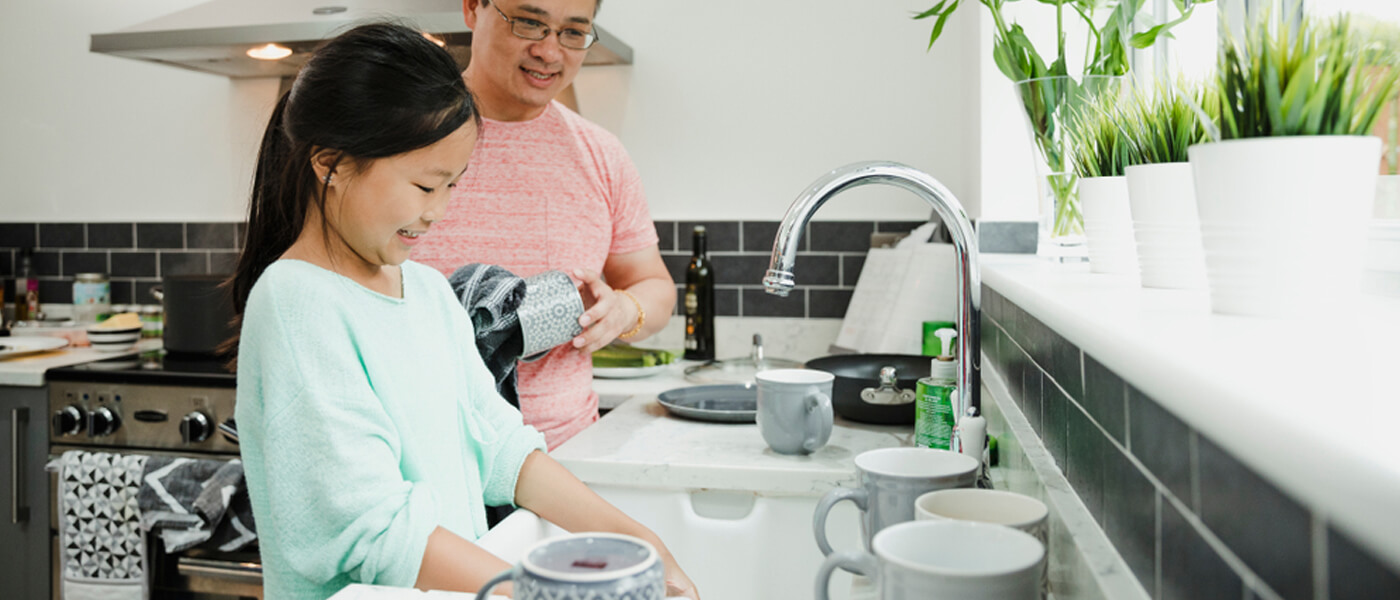
Chinese New Year is just around the corner, and tradition says that one of the most important priorities you have to focus on when it comes to bringing good fortune into your life is to be organized and clean.
Cleaning your entire home can be time-consuming, but this can be done by dedicating a single weekend to orchestrate a major cleaning session, or in various pockets of time—aiming to complete the tasks one step at a time. In fact, spring cleaning can be a fun family activity which doubles up as bonding time, as parents can also involve the children in the spring cleaning as well to allow them to take ownership of the space they live in.
Either way, it will be all worth it when you look up and see a clean and tidy environment for you and your family. To help you kick start your cleaning spree, here are 8 tips to help you organise your spring cleaning list.

1. Clear the decorations
With every festive holiday, we love to decorate our houses to bask in the festivity. From the Christmas tree by the living room to the Chinese couplets hanging by the door for prosperity and good luck, Singaporeans love dressing up their homes. However, once the holiday ends, we may find the decorations to be there a tat longer than they were meant to be.
Before the year gets busy, set some time to clear the decorations and make space for a clean and airy space for yourself and your family. Don’t wait till the next holiday to see the previous festive decorations still there

2. Use your old toothbrushes
Before you throw out your old toothbrushes, do remember that they can also serve as mini brushes that can help get the grime and dirt out from the smallest corners—so put them with your cleaning supplies.
You may find it exceptionally useful in cleaning every nook and cranny or your bathroom taps and between the grime between the kitchen tiles.
3. Clean your mattress and under it
On average, we spend 7 hours a day sleeping. This makes our mattress one of the most utilised furniture in our homes so thorough care should go into it to ensure we get a restful sleep in a clean space.
Watch out for the space under your bed and the gap between the headboard and the mattress. These areas are where we tend to overlook when spring cleaning. Take it a step further by opting to vacuum your bed as well. You will be surprised by the amount of dust and linen collected on it that may have negative impacts on your health should it be overlooked.
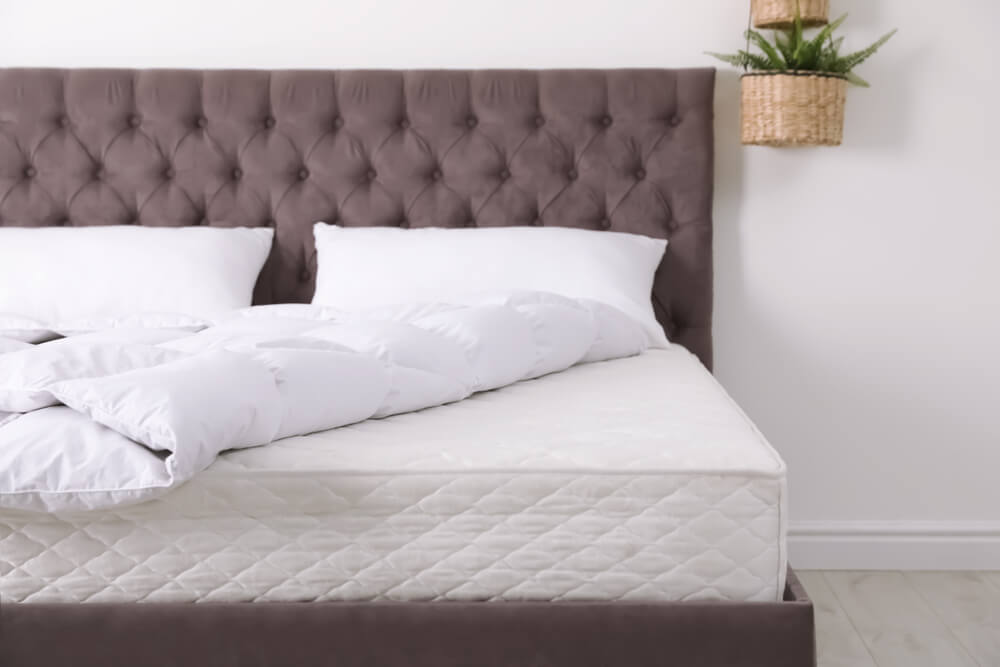
4. That’s got to go
The amount of stuff that we accumulate each year never fails to scare us at the end of the year when we spring clean. In 2016 alone, 150,000 tonnes of textile and leather waste was generated in Singapore, of which only seven per cent was recycled.
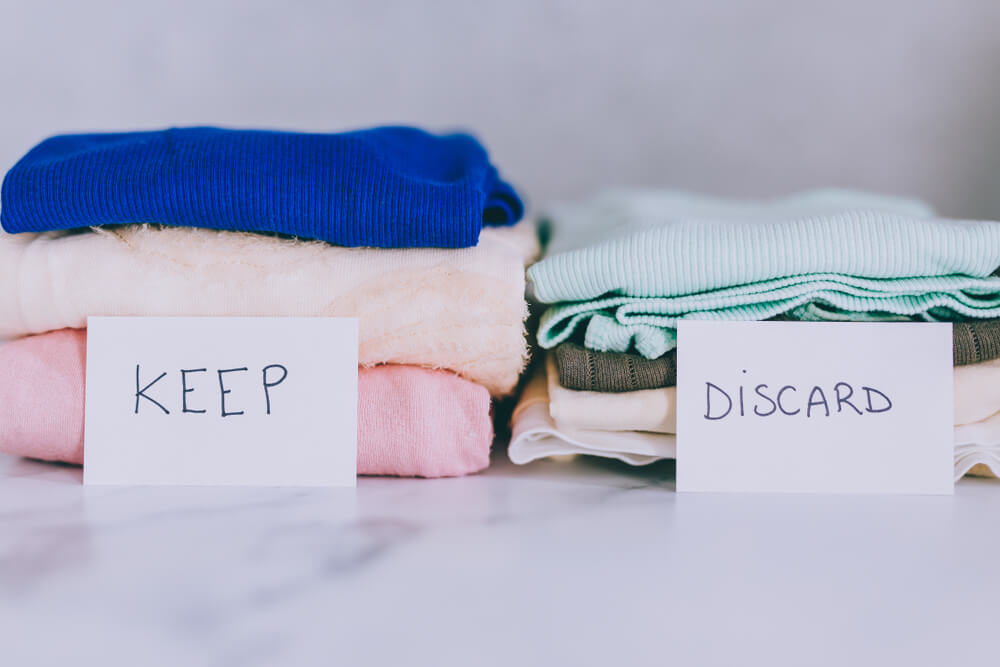
Instead, set aside bins to make the decluttering easier by categorising them into:
- Keep
- Donate/Sell
- Recycle
- Throw
Following which, do a stock take on your possessions and clear out what you do not need. You may even want to mull over your shopping habits over the year and work on taking steps towards a more conscious consumption. Not only will it prevent clutter at home, but also allows you to play a part to reduce unnecessary consumption.
5. Make your own homemade cleansers
Not only can you make them out of the ingredients right from your pantry, homemade cleansers also informs you of what actually goes into it to ensure the safety for you and your family.
Making your own is not all that tough. Find out how you can go natural with homemade cleaning cleansers and make some of your own.
6. Make a plan
Cleaning your home in a single day is an almost impossible task unless you have all hands on deck to help you out. A spring-cleaning checklist is necessary to ensure that all chores are covered, and the house is clean (and an organiser can come in handy!).
Your plan should include all the areas you are targeting to clean, the methods to use, and the tools needed. It should also allocate time for the tasks and resource delegation should you have some help.
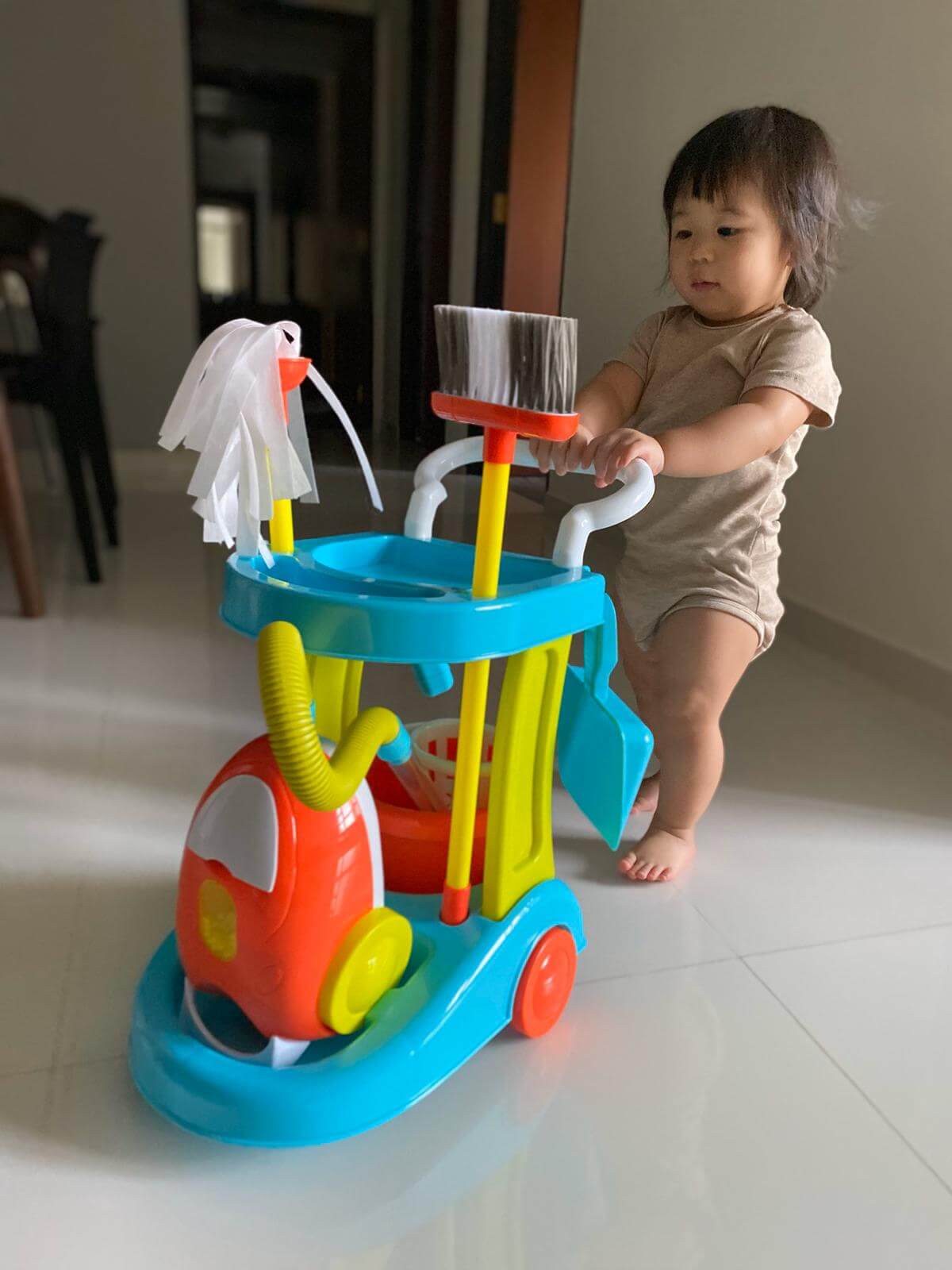
7. Harness the goodness from the sun
Fight the dust mites on your bedding and pillows by using the sun. This is a great way to freshen all kinds of cushion, pillows, mattresses and comforters to get rid of all the dust mites and any lingering sweat odors. Do ensure the covers are taken off and regularly flip it after an hour on each side.
8. Leave the floor to the last
Cleaning of floors should come last after you have cleaned everything else including walls. Nobody wants dirt and dust all over vacuumed and mopped floor. By starting from top to bottom, you avoid making a mess on areas you have already cleaned.
Sustainable Resolutions for 2020
There is no better way to start the year with a clean space to ensure a clean mind. Here are some other ways you can make 2020 your year through these resolutions! Not only are you working towards a better you, but also to a better Earth for the future of your loved ones and yourself.
References:
- Elangovan, N. (2020, June 5) Singapore households generated additional 1,334 tonnes of plastic waste during circuit breaker: Study, Today Online.
https://www.todayonline.com/singapore/singapore-households-generated-additional-1334-tonnes-plastic-waste-during-circuit-breaker
Image Credits: Nylon Coffee Roasters
Source: The Sustainability Project
6 Resolutions for a Sustainable 2020
- Home
- Articles Posted by (
- Page 9 )
[Post Date]
6 Resolutions for a Sustainable 2020

Before we jump on the bandwagon of setting our New Year resolutions for 2020, let us reflect on the past year and ask ourselves—how many of these goals have we actually kept, and how many of them have we just resigned to the let’s try again next year category?
Well, it’s not too late to get back on track and achieving your resolutions for the year. It’s just about having SMART goals—that is, Specific, Measurable, Attainable, Relevant, and Time-Bound—rather than generic resolutions.
Here are 6 SMART eco-friendly goals that we can all make to embark on a more sustainable lifestyle:
1) Cultivate your green fingers and try your hand at urban gardening
The benefits that urban gardening bring about is limited to not only educating people to be appreciative of food sources but to also cultivate community bonding and the increased use of green spaces. You can try growing your own herbs and food in the comfort of your own home. Start off with some of the commonly grown plants such as basil and mint. But if you find that too daunting, you can seek out a community garden to be part of. Joining a community garden will allow you to practice sustainable living by growing your own harvest, but to also bond and learn from other urban gardeners within the neighbourhood.
2020 SMART goal: Grow a basil plant and use it for your meals
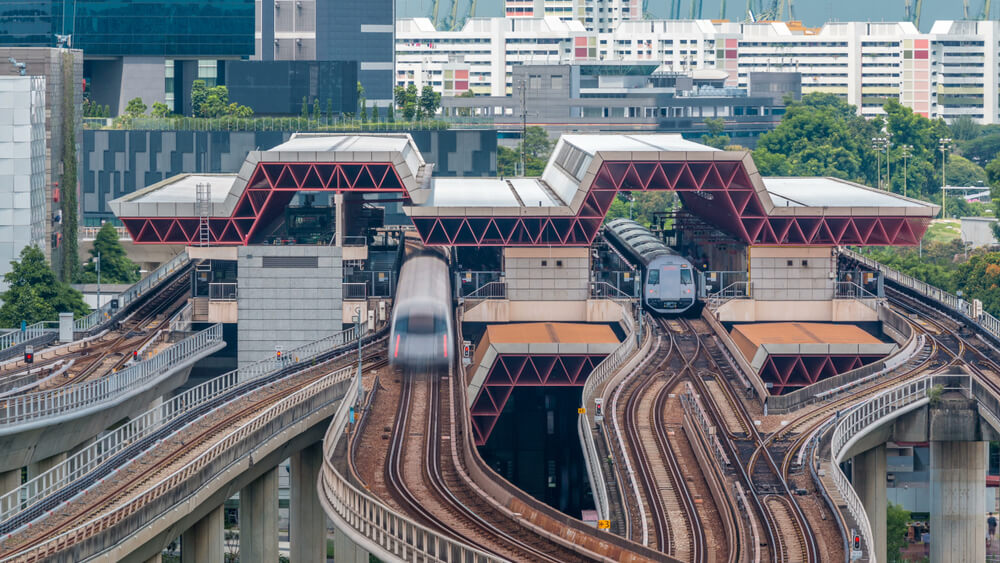
2) Swap driving for public transport
Last year, statistics from the Land Transport Authority showed a decrease in the total number of vehicles in Singapore to 957,006 – the lowest since 2016. By opting to take public transport more frequently instead of driving your own car, you can play your part in reducing harmful carbon emissions that contribute to global warming. Additionally, you would also be contributing to a more efficient transport system by reducing the number of vehicles and congestion on the road. With an expanding MRT system, getting anywhere in Singapore via public transport has never been so convenient, and will continue to get more convenient in the next few years!
2020 SMART goal: Take public transport instead of driving once a week
3) Repair your own appliances instead of throwing them away
It may seem more convenient to purchase a new item when one of your household appliances breaks down. However, it can be much more cost-effective, and environmentally friendly to try and fix it instead of readily throwing it away. This also helps reduce e-waste, which can lead to harmful effects on our environment.
Not sure how to fix an appliance? Bring it to one of the monthly sessions by hosted by our ChangeMakersSG partner, Repair Kopitiam, at any of their three locations in Ang Mo Kio, Jurong or Tampines, where their repair coaches can demonstrate and teach you some simple skills to breathe new life into your household appliances.
2020 SMART goal: Repair 2 household appliances in 2020, instead of throwing them away

4) Pass on your old clothes and purchase second-hand pieces
Make it a point to buy less (or not at all!) new clothes this year. Instead, consider purchasing second-hand items from retailers such as our ChangeMakerSG partner, REFASH, which provides a marketplace for women to sell clothes that no longer fit, and purchase second-hand pieces (some even have their original tags on) from others. Similarly, pass on your old clothes instead of throwing them away to reduce textile wastage.
2020 SMART goal: Reduce purchases from retailers by 50% by June
5) Turn off all vampire plugs
Did you know? Leaving that microwave oven or television on standby draws large amount of electricity. A simple action of making it a habit to turn them off at the source can save not only your electricity bills but the Earth too.
2020 SMART goal: Upon leaving the office or your home, ensure all your appliances are switched off at the main plug
6) Switch to a green energy supplier
Last but not least, take the leap this year to switch to an electricity supplier that can provide a greener option to help you cut down your carbon footprint in 2020. At Geneco, we help our customers achieve this with two of our plans – “Get It Green”, which provides a carbon neutral option to offset the impact of our customer’s electricity usage, and “Get Sunny”, a clean energy option where we harness the goodness from our sun.
From now till 29 February, apply our promo code HUAT38 when you sign up for either of the two plans to enjoy a $38 rebate. If you are an existing customer, share this promotion with your friends and get them to come on board too and you will be rewarded for your referrals! You will receive $20 rebate for each friend that successfully signs up with your contact number as the referral code. In addition, participate in our CNY Special Referral Bonus Programme and earn up to $2,020 in bonus rebates when you refer more friends.
2020 SMART goal: Switch to Geneco’s Get It Green or Get Sunny plans in 2020!
References:
- Elangovan, N. (2020, June 5) Singapore households generated additional 1,334 tonnes of plastic waste during circuit breaker: Study, Today Online.
https://www.todayonline.com/singapore/singapore-households-generated-additional-1334-tonnes-plastic-waste-during-circuit-breaker
Image Credits: Nylon Coffee Roasters
Source: The Sustainability Project
Dreaming Of A Green Christmas With Geneco
- Home
- Articles Posted by (
- Page 9 )
[Post Date]
Dreaming Of A Green Christmas With Geneco

Are you ready for Christmas?
Visit our Christmas lodge at Wisma Atria from now till 1 Dec 2019 to power up yourself to be ready for a wonderful green Christmas.
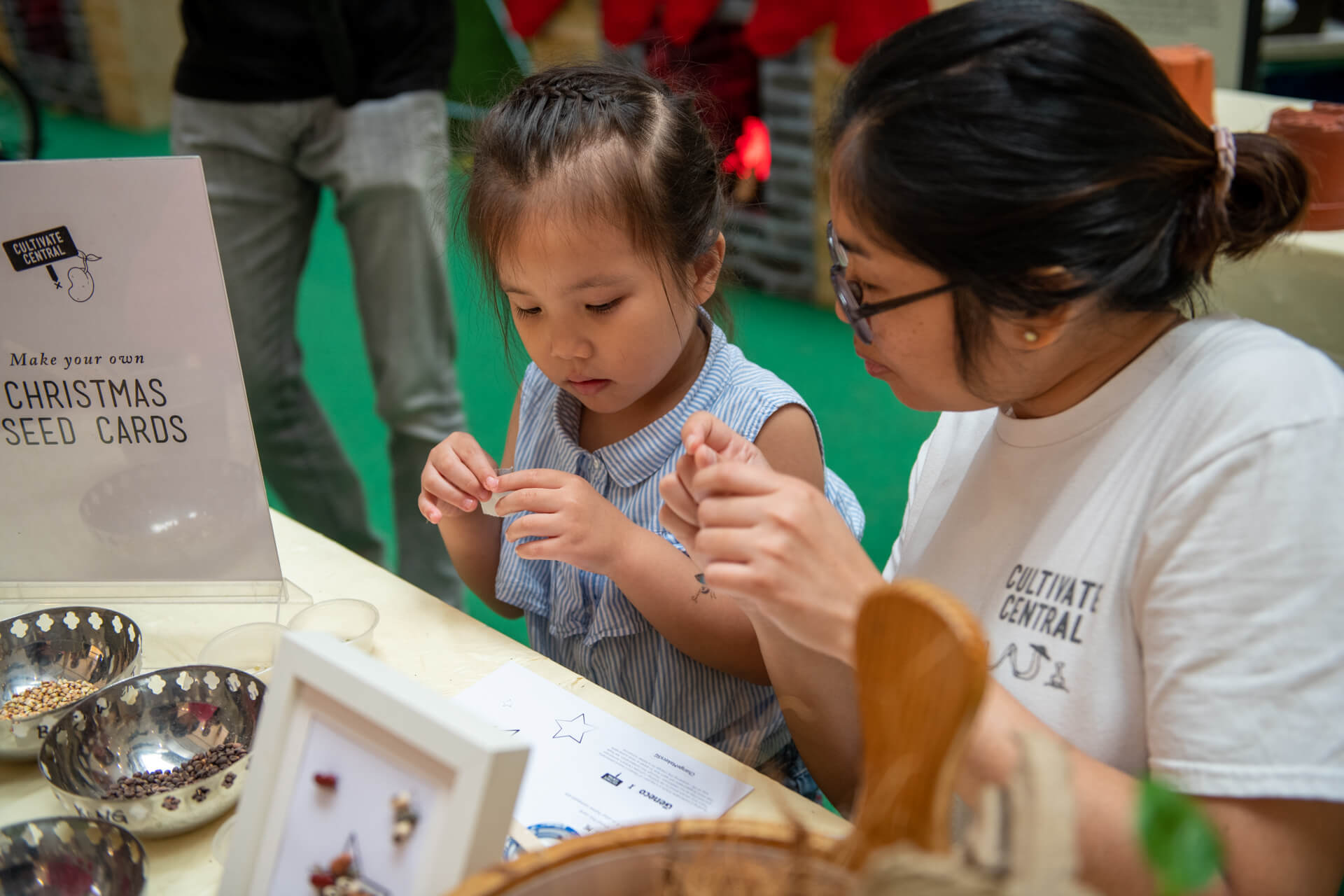
Sustainable Crafting Workshops This Christmas
With the rise of sustainability, you can make your Christmas a greener one with our sustainable crafting workshops for young and old. Workshops were held every week for the month of November and comprised of sustainable craft activities you would have never thought of for this Christmas.
Cocodama Workshop
Participants were able to create their own Cocodama, a botanic creation made from the coconut husks, forming a beautiful personal “potted plant” that can be displayed at home.
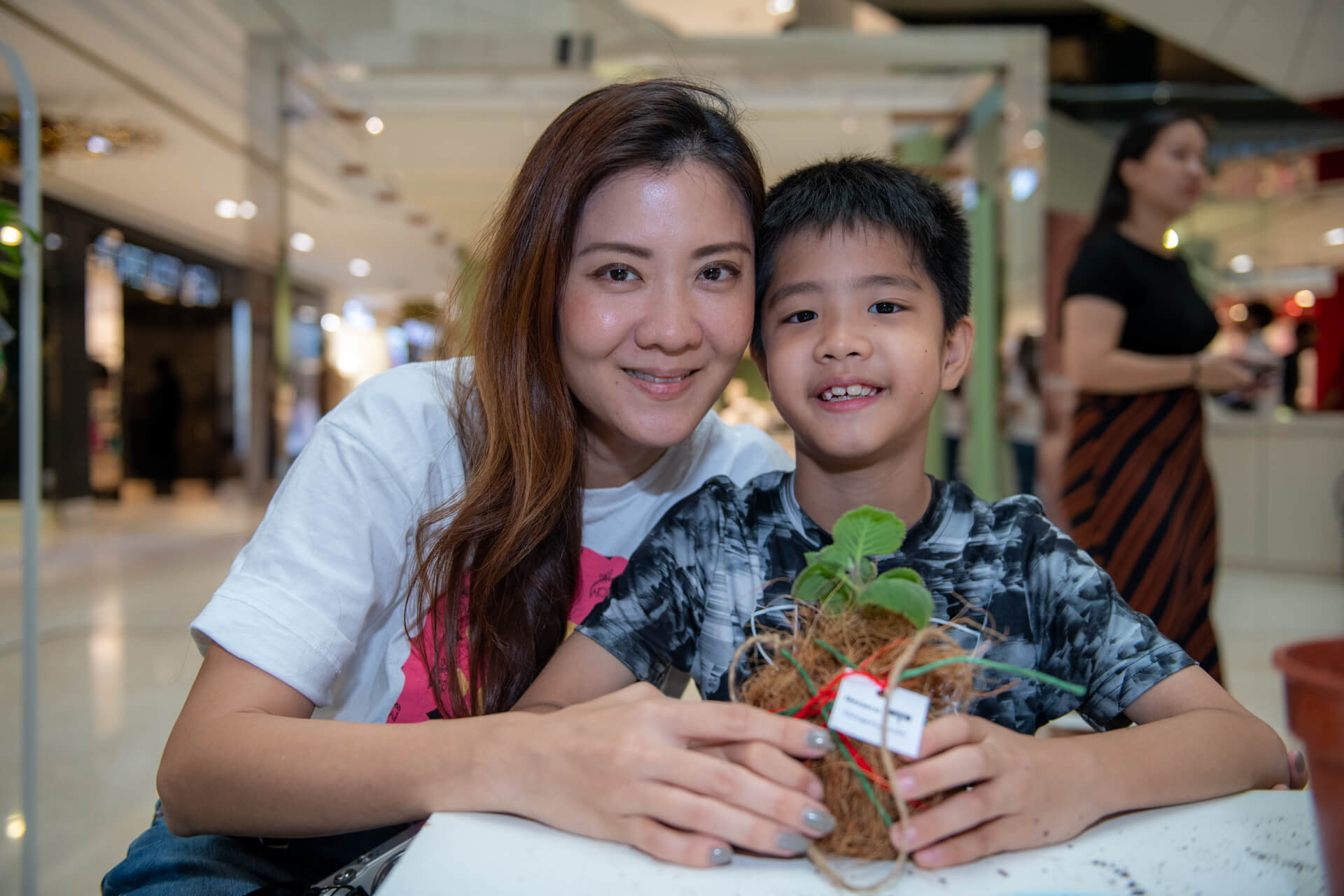
Under the guidance of our coaches and with their help of their parents, our young guests were able to exercise their creativity and create beautiful cocodamas of their own.
Seed Card Crafting
Another hit among the younglings was the seed crafting booth at our Christmas Lodge. Intrigued by the small seeds and what they can grow to become, children made their own Christmas cards using a mixture of seeds such as kang kong seeds and black eye seeds, to bring home to their loved ones.
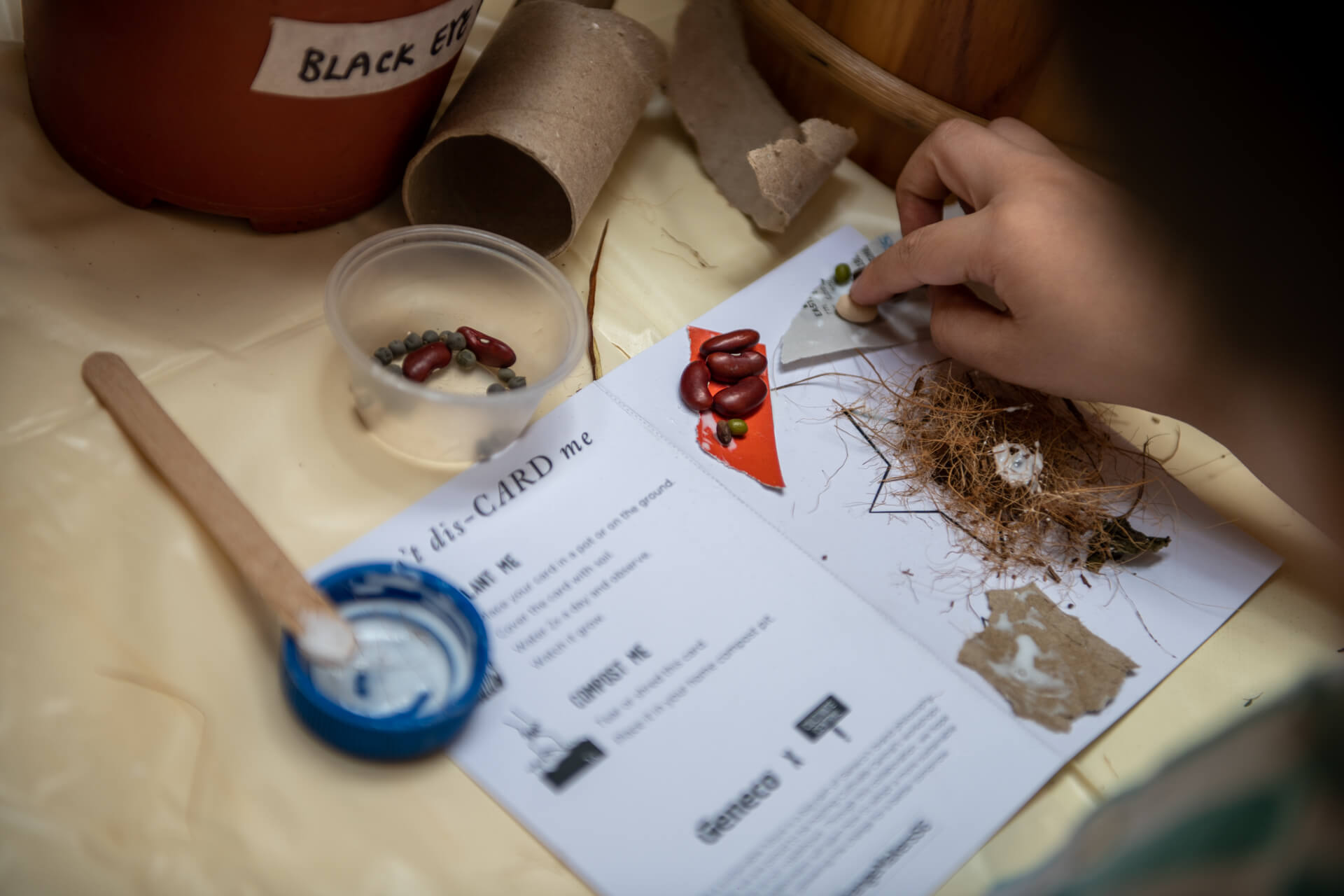
Not only are the cards compostable, the seeds encourage the children to plant their own seedlings and track their growth to become fresh produce.
Dancing Light Ornaments
Making your own LED Christmas ornaments might see like a task too daunting for anyone. However, at our Christmas workshop, participants got to make this a reality. Participants were greeted with a range of tools to engage in basic soldering work to make their own LED ornaments.
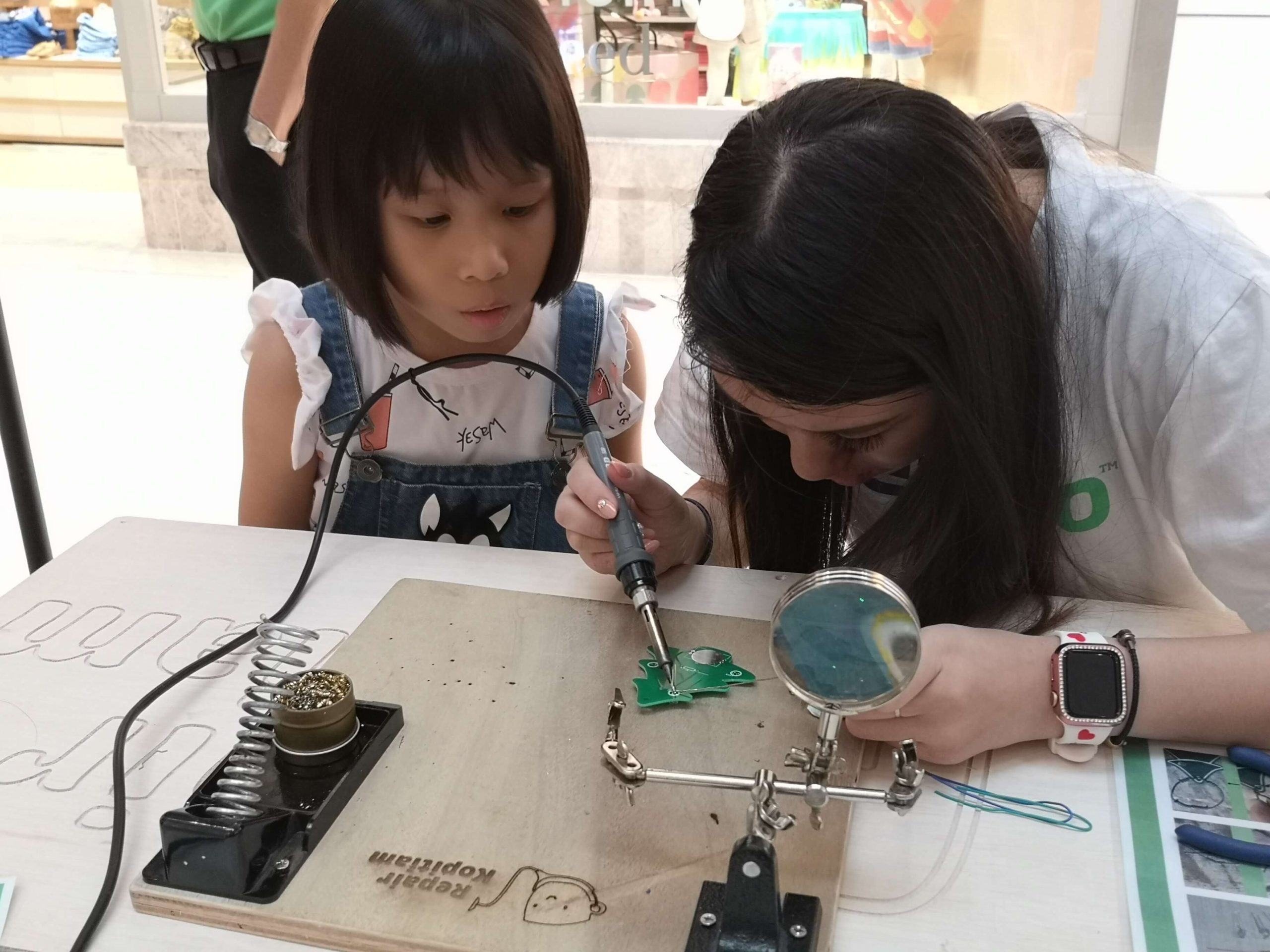
The kids were amazed by what they could create with the simple soldering skills they procured and how they could easily create a dancing light Christmas ornament. It’s the perfect addition to their Christmas decorations at home to let the kids show what they can make.
Festive T-shirt Coaster
What to do with all those t-shirts that you no longer wear? Here at our crafting booth at the Geneco Christmas Lodge, we show participants on how they can up-cycle their old shirts to make their own coasters for this holiday season. Definitely useful with all the upcoming festival celebrations where you host your family and friends.
Light Up Your Own Christmas Tree
Other highlights at the Geneco Christmas lodge include a kinetic bicycle that will convert the energy generated from its rider into electrical energy that was used to light up a Christmas tree decoration behind the bicycle.
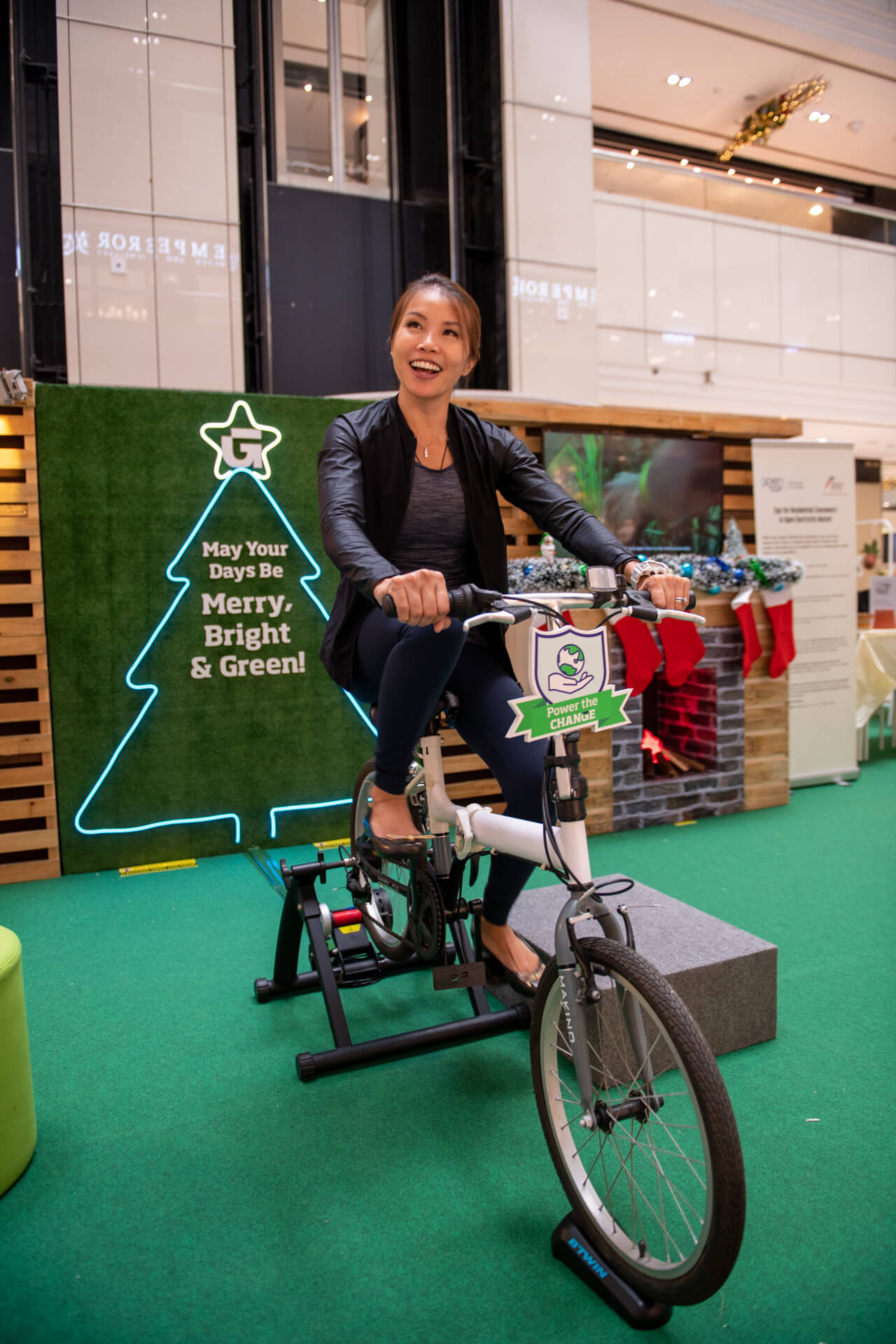
This activity was an absolute favourite among the energetic children, who couldn’t wait for their turn on the bicycle, and were extremely fascinated by the tree lighting up from their own efforts. Along the way, they were also able to learn about how energy is created and appreciate how much energy is needed to power our daily appliances, and why energy conservation is important for us.
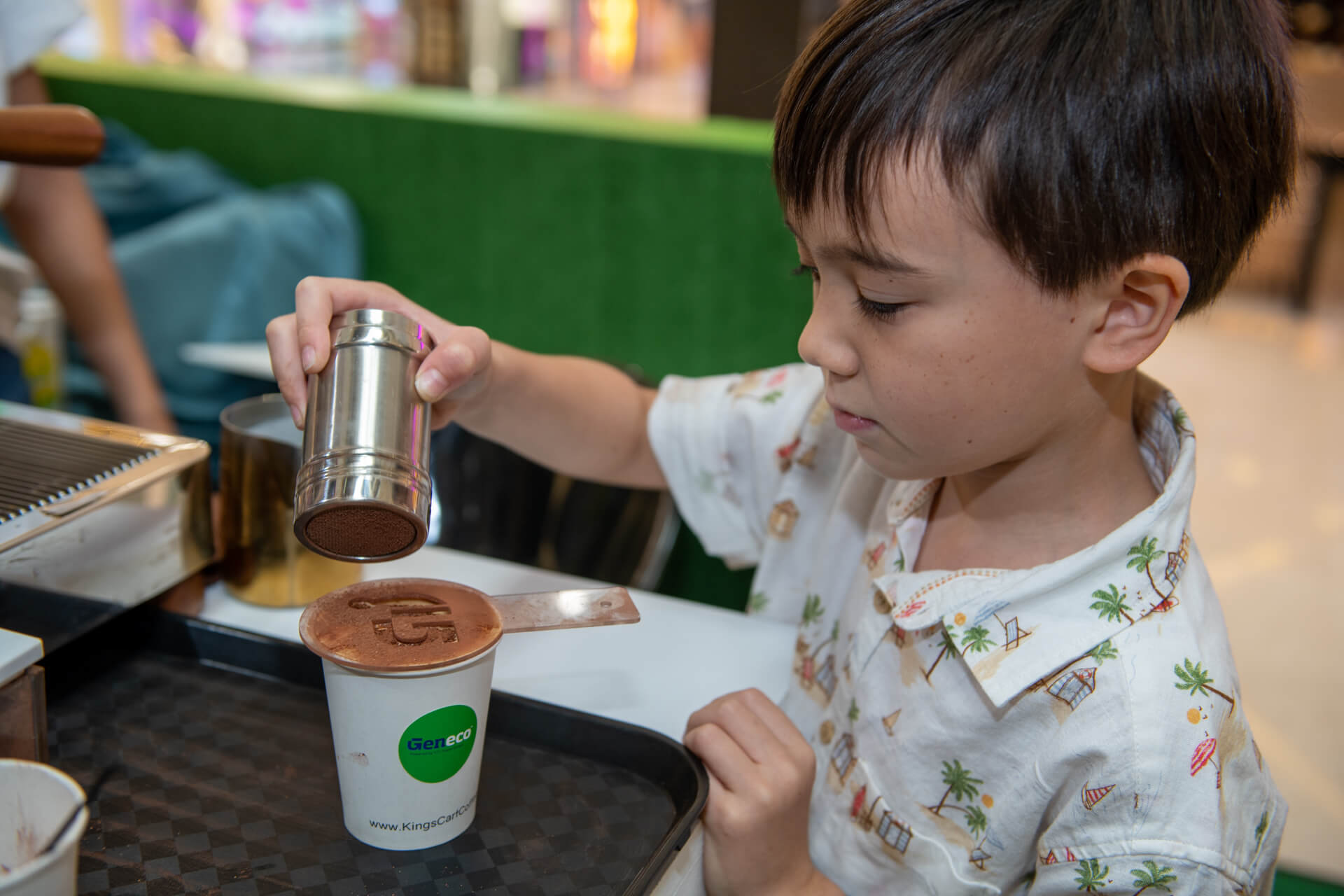
Visitors to our Christmas lodge can also try their hand at this kinetic bicycle, and take part in our Christmas Instagram contest. Take a picture of yourself on the bicycle with the lighted Christmas tree on Instagram and tag us with the hashtag #genecochristmas, and you could be one of five lucky winners with the most number of likes to receive $50 worth of shopping vouchers! Geneco customers who visit our Christmas booth can also redeem a free cup of sustainability-sourced coffee.
Get yourself ready for Christmas now and visit us at the Geneco Christmas lodge at the Level 1 Atrium in Wisma Atria before 1 December 2019!
Don’t miss our final workshop this weekend, where your children can also try their hand at creating a dancing light ornament. As long as you are a Geneco customer, you’re free to join our workshops and activities!
12 Sustainable Gift Ideas and Tips for Christmas
- Home
- Articles Posted by (
- Page 9 )
[Post Date]
12 Sustainable Gift Ideas and Tips for Christmas
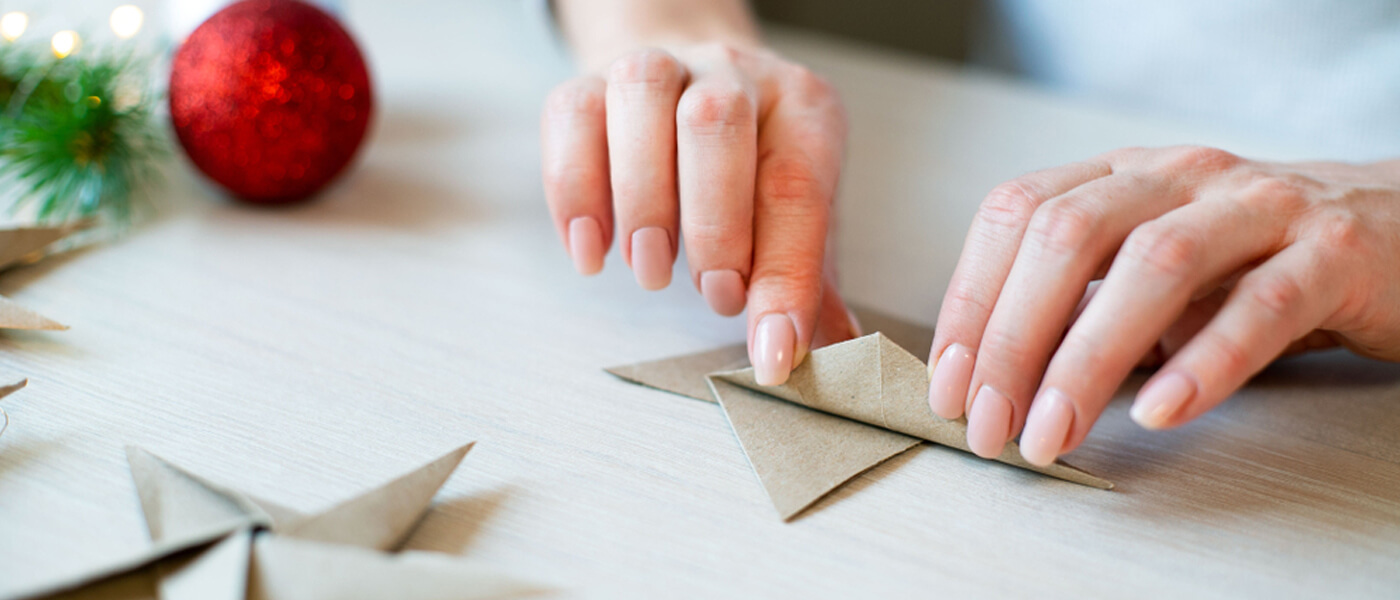
Christmas is right around the corner! As we approach this season of giving, we must not forget to be environmentally responsible and reduce our waste as much as possible. Christmas is a wonderful opportunity to share some gifts with your loved ones that can encourage them to adopt a greener lifestyle.
Here are some gift ideas that can help your peers kickstart the environmentally-responsible lifestyle:
1) Kickstart an eco-friendly journey with with a reusable collapsible cup
Have a friend who is always out on coffee runs? Gift them a collapsible cup. Not only does it help reduce the amount of plastic waste, but it is also storage-friendly and stylish as well. With many places offering Bring-Your-Own-Cup discounts now, everyone’s a winner!
2) Hand-painted Mugs
Mugs are usually seen as “boring” or “lazy” christmas gift exchange options. You can change this view by personalising a mug for a friend! Bring out the paintbrushes and put on your artist cap to give a plain mug a new look by hand painting it with any design you can think of. You can even use old nail polishes instead of paint. Your imagination is the limit with this special gift that will certainly be appreciated by your friends.
Want to go the extra mile? Make your own gifts with material you have at home instead of purchasing new items for added sincerity and sustainability!
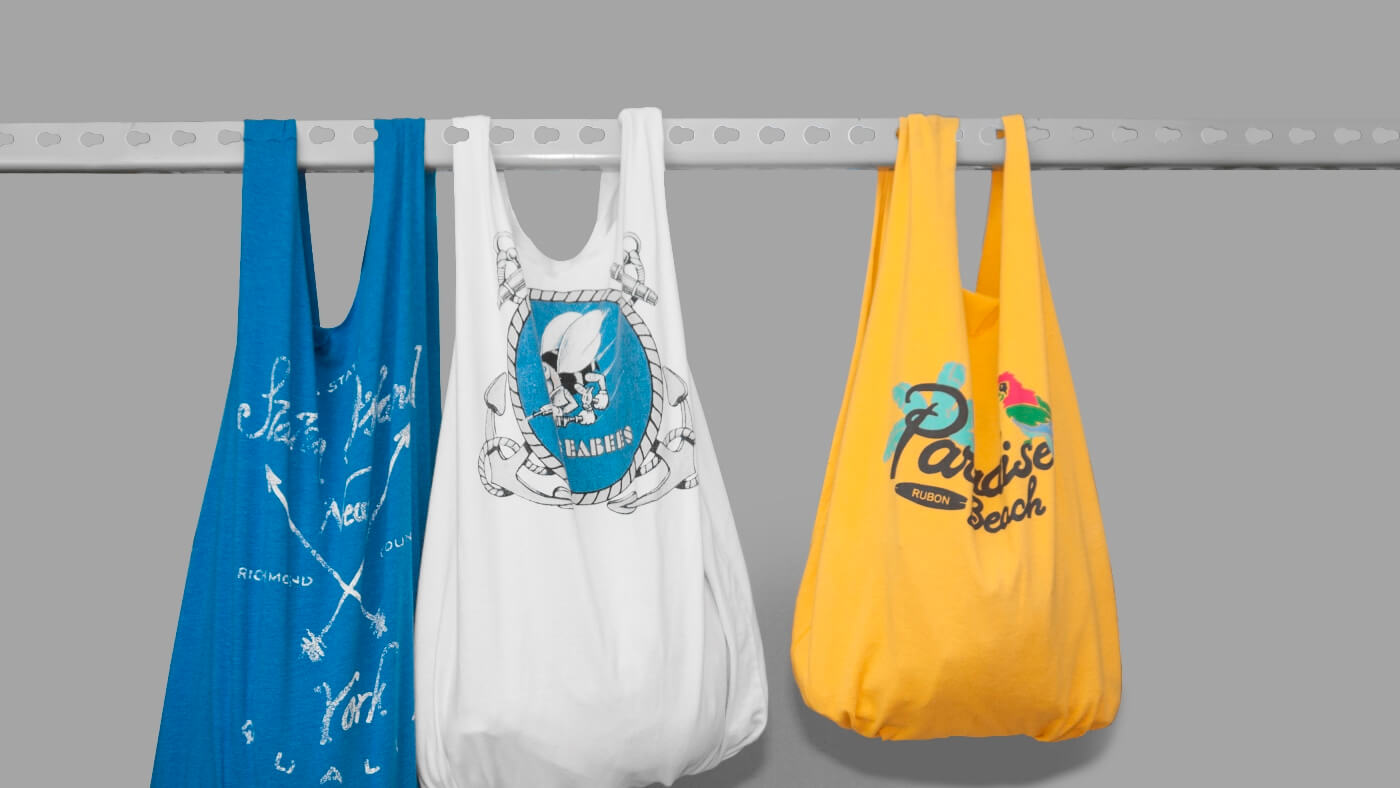
Photo Credits: CULTU-RE EXPERIMENT
3) DIY Tote Bag for grocery runs
If you have an old t-shirt lying around at home, consider upcycling it to create a unique tote bag that can be used for grocery shopping. With a few simple steps, you can give a close friend or family member a one-of-a-kind tote bag that is both unique and personal. You can even further decorate it with some drawings or stickers!
4) DIY Body Scrub
Add a layer of closeness to your relationship with your loved ones with some homemade body scrubs. These are easy to make, and not only gentle on the skin, but also on the environment. These DIY body scrubs are guaranteed to be fully organic and beneficial for the body, a wonderful way to express your love for the recipient. To keep up with the theme of sustainability, store the scrub in a recycled jar.
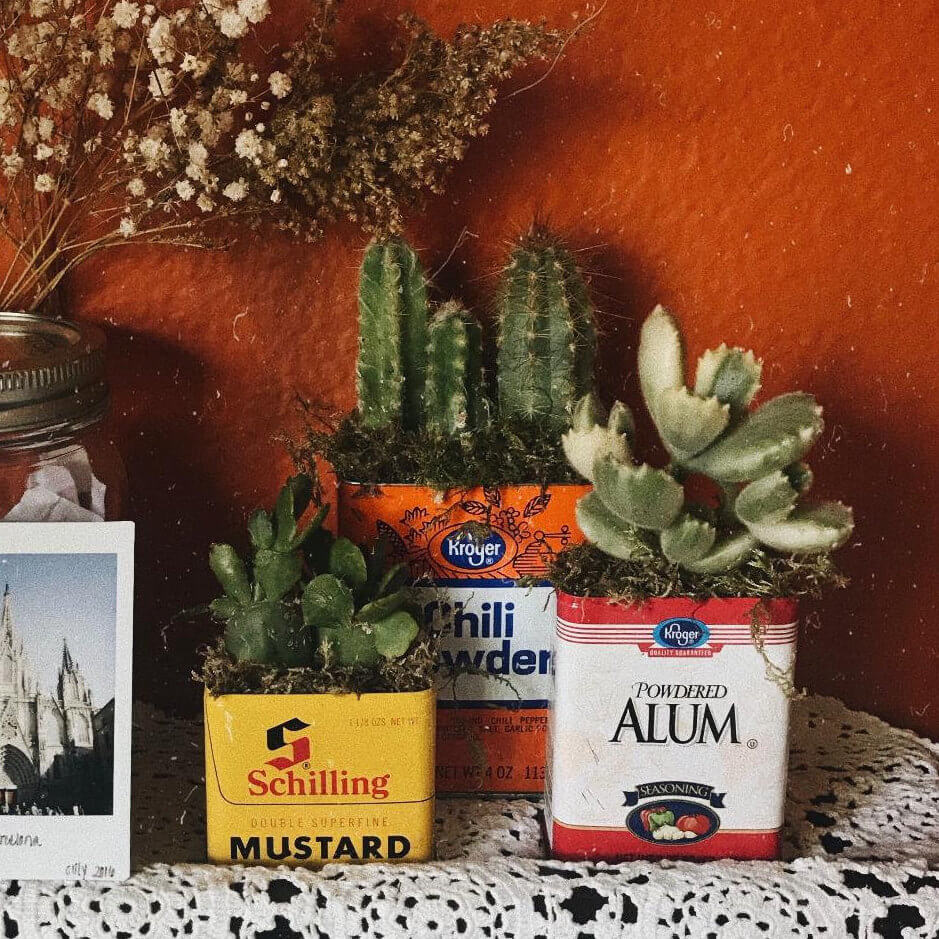
Photo Credits: Etsy
5) Upcycled Succulent Planter
Give your loved ones the gift of life with a succulent plant, a great way to add a touch of green to their households. These plants are beautiful to look at, and easy to take care of, making them a great decorative choice for Christmas. For a unique look, consider upcycling condiment jars or tins into planters to place your succulents in before gifting them to your family or friends.
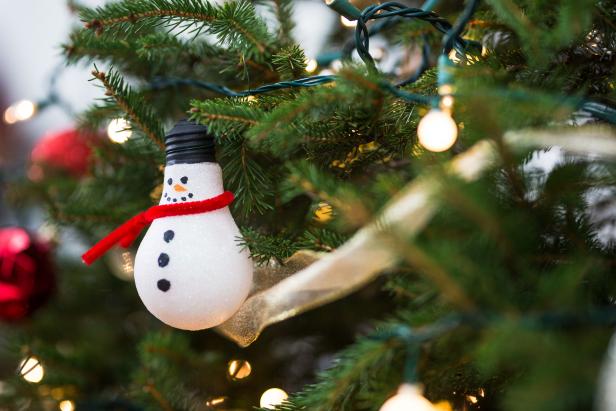
Photo Credits: HGTV
6) Creative Christmas Tree Ornaments with Upcycled Light Bulbs
Have some faulty light bulbs at home? Don’t throw them away just yet!
With some acrylic paint and a little creativity, you can easily upcycle them and give them new life as beautiful christmas tree ornaments. These ornaments make adorable gifts as well that your friends can put up onto their christmas trees at home.
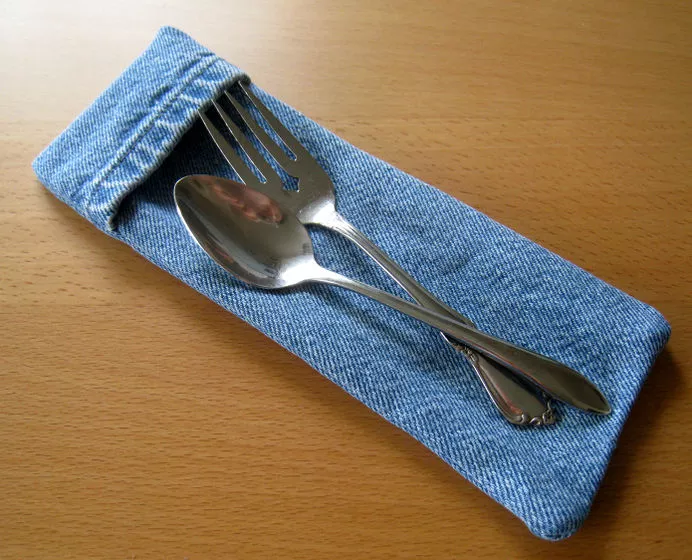
Photo Credits: Wikihow
7) Handmade Cutlery Pouches
Encourage your family and friends to ditch the disposables and cut down on plastic waste by giving them a good reason to start bringing their own cutlery around. Simply use any leftover fabric, or even old clothes, to make a pouch that can be used to keep metal cutlery or even metal straws that they can bring around with them.
8) Handmade Cookies and Cakes
Conquer both the heart and stomach with some homemade cookies and cakes. Christmas gifts don’t always have to be a useful object – they can be consumables too! Make the extra effort to bake some homemade cookies and cakes that are full of butter and love for someone you care about. Remember to put the food in a lunchbox or metal container to avoid plastic use!
9) Send E-Cards instead of Physical Cards
Consider sending an e-card instead of a physical card. The manufacturing and delivering of a physical christmas card can increase your carbon footprint. Instead, try sending an e-card instead via email. Websites like Canva are a great guide to help you create an amazing looking e-card that your family and friends can instantly receive. Furthermore, e-cards offer you a wider range of possibilities beyond the limited design options of physical cards.
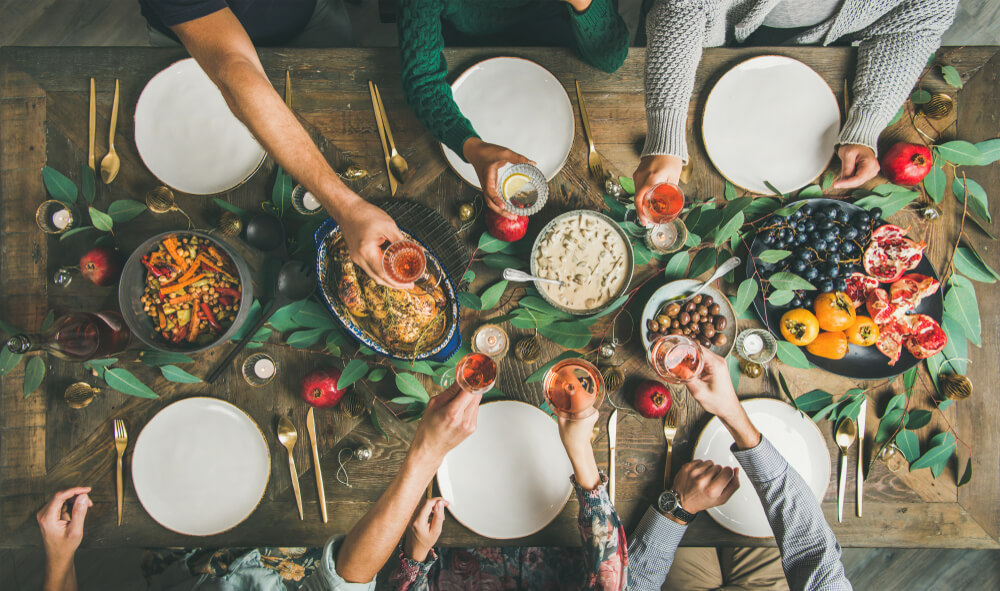
10) Reduce Food Wastage
Turkeys, ribs, log cake. It is easy to get carried away while purchasing food for a christmas feast at home and ending up having to throw away a lot of leftover food. One good way to manage your food waste is to plan in advance and buy only what is needed. After the party, keep your leftovers wherever possible and save them for other meals. Encourage your guests to bring their own food containers as well to take home all the extra food.
11) Used Recycled Paper to Wrap your Gifts
Did you know that most wrapping papers cannot be recycled? The usage of wrapping paper for christmas gifts each year contributes to our generated waste, and you can help by choosing to use other options to wrap your gifts. Consider upcycling old magazines or newspapers that you no longer read as wrapping papers for a colourful and rustic look. You can also opt to paint over the paper with acrylic paint for some DIY wrapping paper!
12) Conserve Energy and Opt for Greener Options
A lot of electricity can be consumed during the christmas period as we light up our christmas trees. Switch to LED lights for your christmas lights – not only do they use less energy than the usual incandescent christmas lights, they also emit lesser greenhouse gases than incandescent bulbs, making them not only more energy-efficient, but also much more environmentally-friendly.
To go the extra mile, also consider if your electricity plan is environmentally-responsible. Consider electricity plans such as Geneco’s “Get It Green” carbon-neutrality plan or the “Get Sunny” solar energy plans.
References:
- Elangovan, N. (2020, June 5) Singapore households generated additional 1,334 tonnes of plastic waste during circuit breaker: Study, Today Online.
https://www.todayonline.com/singapore/singapore-households-generated-additional-1334-tonnes-plastic-waste-during-circuit-breaker
Image Credits: Nylon Coffee Roasters
Source: The Sustainability Project
Your Guide To Geneco's Electricity Bill
- Home
- Articles Posted by (
- Page 9 )
[Post Date]
Your Guide To Geneco’s Electricity Bill
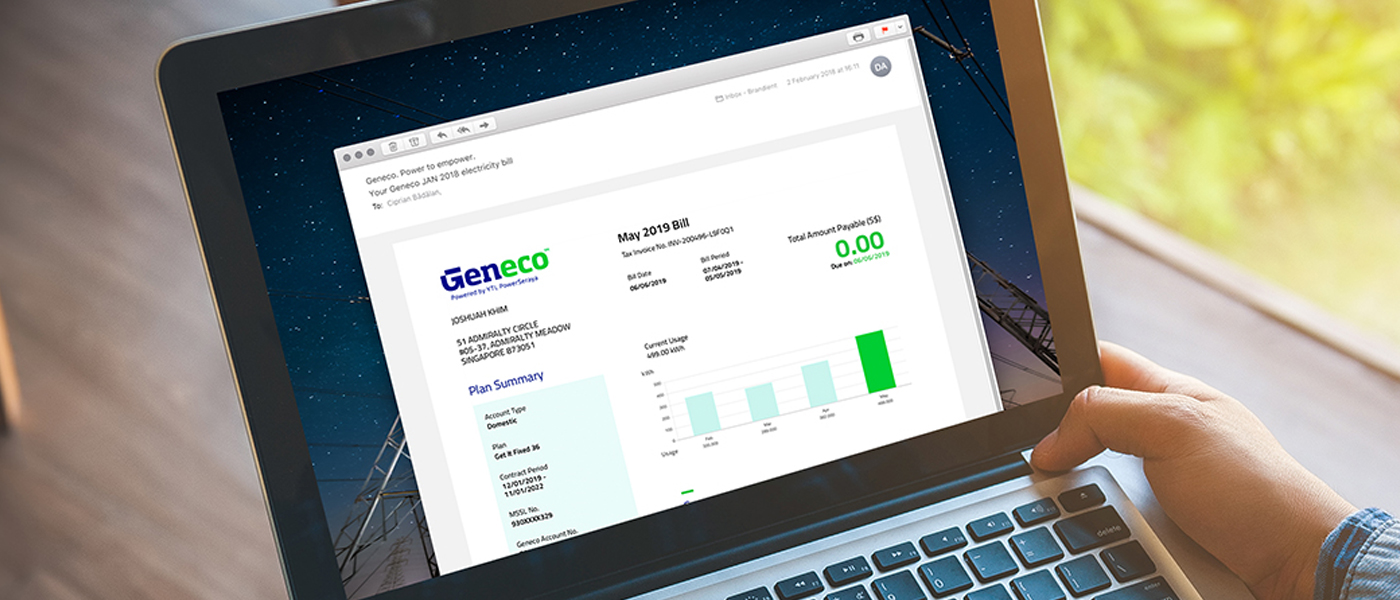
Bills are part and parcel of your monthly routine. At Geneco, we try to keep this as hassle free as possible with our simple bill to assist in you finding the information that are important to you.
Understanding Your Geneco Electricity Bill
1. Bill Summary
This shows you the bill date, the amount payable and the billing period of your current bill.
2. Plan Summary
This section shows the plan that you have signed and all of the information (Geneco Account Number, Contract period) regarding your account with Geneco.
3. Summary of Charges
This portion gives you a view of your balance brought forward from the previous month and the current charges during this billing period.
4. Geneco Rebate Summary
This section informs you on your Geneco rebate and how much rebates are available after deducting from your recent bill.
5. Breakdown of Charges
This section gives you a detailed view of your electricity consumption during the billing period, the rebates that have been offset against your electricity usage for the billing period and other charges or promotions applied.
6. Payment Options
This shows you the list of payment options you can use to make your bill payment. If you are still on one-time payment, why not set it to a recurring payment?
7. Green Tip
Our team has gathered various tip for you to reduce your electricity consumption! If you have any tips that you would like to share, you can write it to us too!
8. Bar Code
This Bar code allows you to scan to pay using AXS machines across Singapore. Do note that this bar code is unique to your Geneco Account.
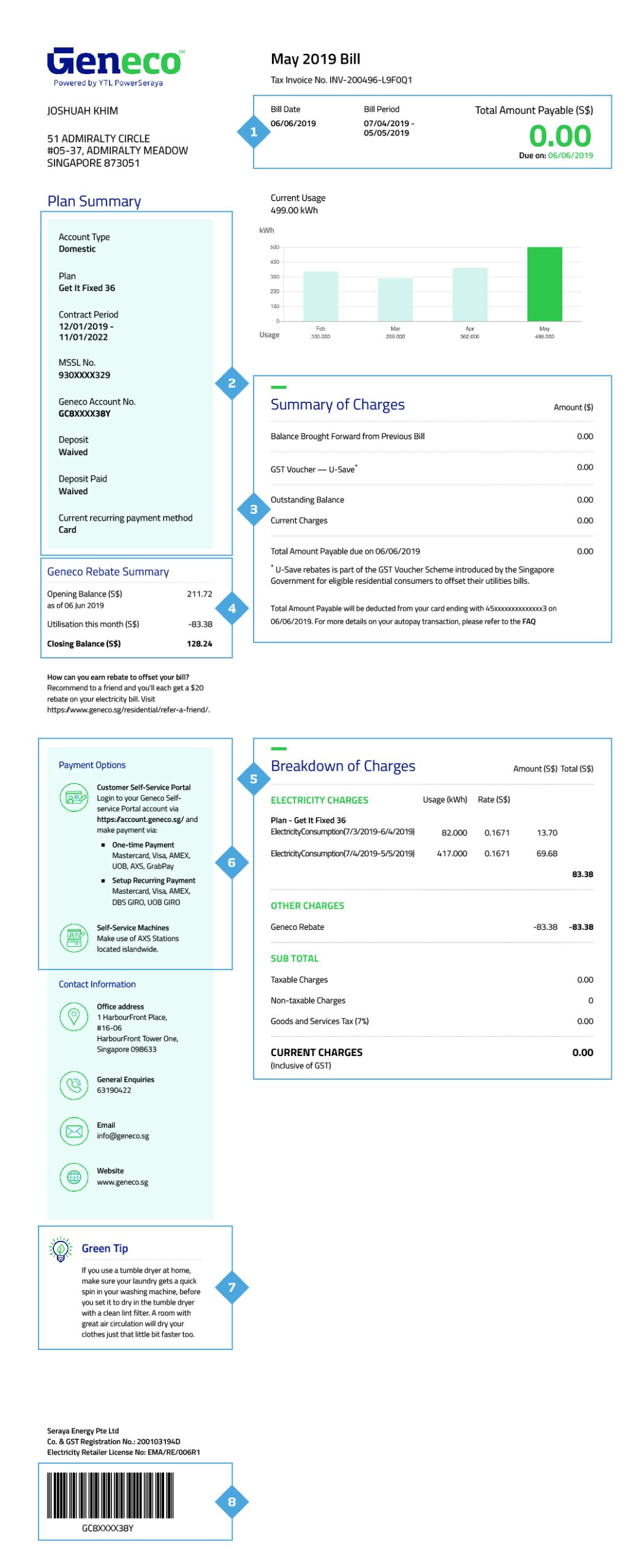
When will I get my first electricity bill?
If you are receiving your Geneco bill for the first time, your first bill will be available on the Geneco Self-Service Portal approximately 45 days to 60 days after your contract start date.
Why does my Geneco bill do not have any non-electricity charges?
Your Geneco bills are for electricity charges only. For non-electricity charges, please refer to your SP Group’s bill for non-electricity charges.
How to convert your Geneco bill into PDF format?
We hear from you that you would like to have your Geneco bill in PDF format but did you know, you can convert your Geneco bill into PDF format as well by just following this 3 easy steps.
- Install a PDF reader on your device. If you have a PDF reader installed, you can ignore this step.
- Press ‘CTRL’ + ‘P’ on the browser with your bill.
- On the left of the dialog box, on the destination, select “Save as PDF” and click save.
Your bill in PDF format will be available for you on your desktop.
Got a question on your electricity consumption?
Find out more here to understand why you might see an increase on your consumption.
References:
- Elangovan, N. (2020, June 5) Singapore households generated additional 1,334 tonnes of plastic waste during circuit breaker: Study, Today Online.
https://www.todayonline.com/singapore/singapore-households-generated-additional-1334-tonnes-plastic-waste-during-circuit-breaker
Image Credits: Nylon Coffee Roasters
Source: The Sustainability Project
Going Natural with Homemade Cleaners
- Home
- Articles Posted by (
- Page 9 )
[Post Date]
Going Natural with Homemade Cleaners
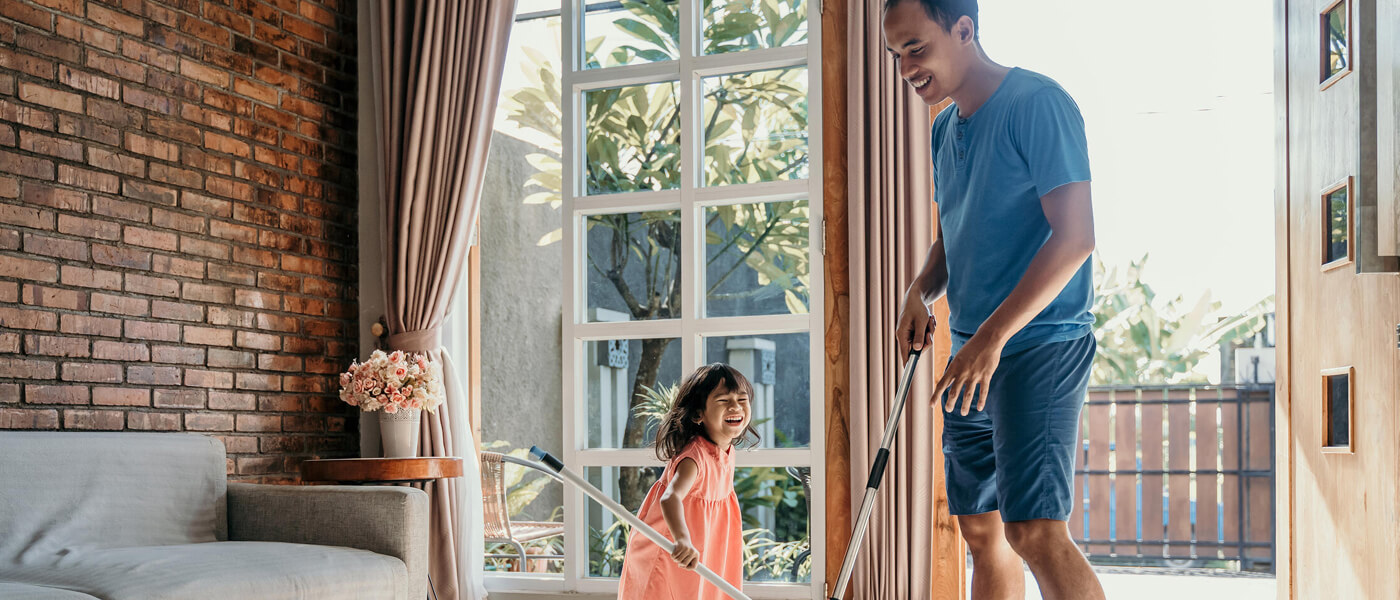
The ingredients may just be sitting in your pantry and it may be just as effective as those store bought cleaners.
With the new year approaching, spring cleaning will definitely be on everyone’s agenda. Before you head down to the supermarket to buy that new multi-purpose cleaner, you may want to look around your pantry first. A couple of key ingredients to that effective homemade cleaner may just be sitting right there.
Why should you make your own home-cleaning products?
Homemade cleaners are beginning to gain traction among households and here are some reasons why as to the rise in their popularity.
Making your home safer
By making your own cleaners, you are opting for a non-toxic option and you know what goes into your cleaning solution. Many conventional cleaning products come with a long list of ingredients that are not recognisable and that can be downright dangerous.

Some of the ingredients used in conventional cleaning are allergies or asthma triggers. Reduce the use of unnecessary chemicals to make your home safe for your family.
Parents can also have an ease of mind by putting together their own cleaning solutions with natural ingredients. Children and pets are especially vulnerable due to higher exposure levels because of their size. With homemade cleaning solutions, parents do not have to worry if their child gets too close. They can even give them a sponge with a squirt of homemade cleanser and imitate their cleaning actions.
Cleaning your home at a fraction of a price
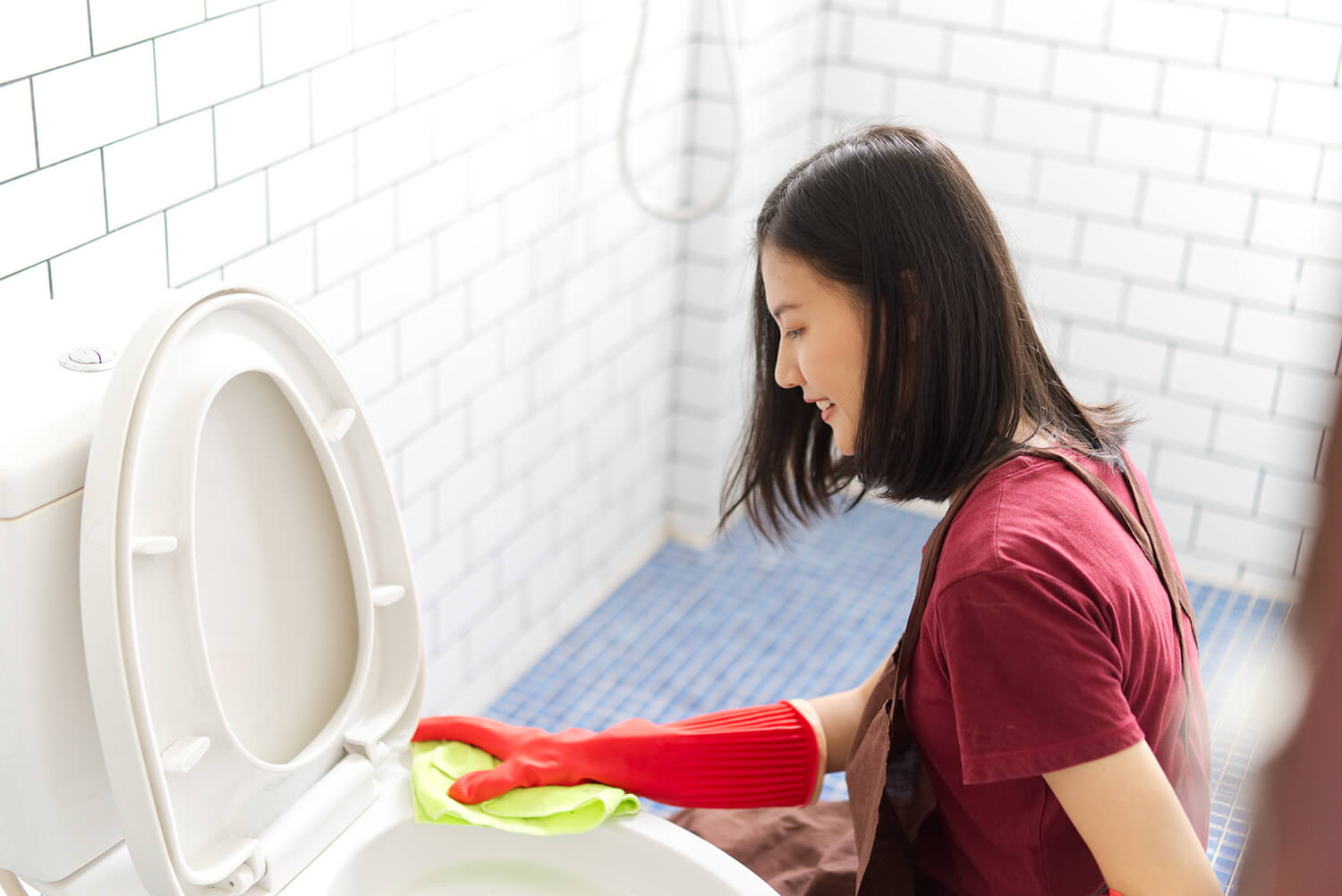
Homemade cleaning solutions surprisingly require only a couple of key ingredients. All you need may be some lemon, baking soda and vinegar to make that cleaning solution to get all the dirt out. These are essentially the three magic ingredients that can clean just about anything if you think they may not be as effective as store bought cleaners.
Read on to see how you can make some for yourself
Helping the Environment
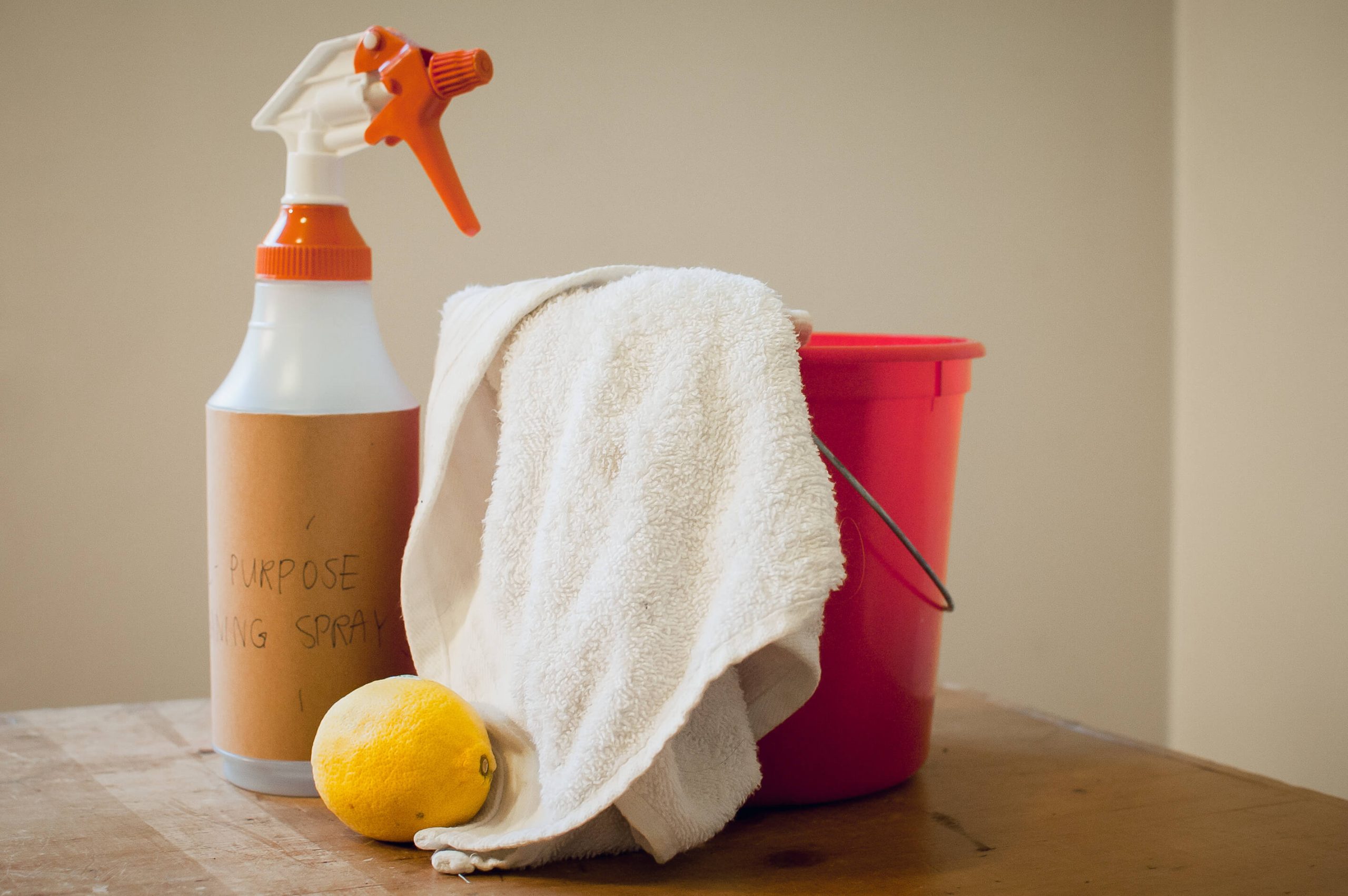
Making your own cleaning products is a step towards an even more sustainable lifestyle. Some conventional cleaning products contain ingredients that are toxic, hazardous and non-biodegradable. Many of which come from non-renewable resources like petroleum and adversely affect our planet’s ecosystem.
How to make your own own cleaning products?
All-purpose cleanser
Ingredients:
- 8 tbsp vinegar
- 4 tbsp baking soda
- 1 litre of water
- Lemon rinds (optional)
Mix the vinegar and baking soda with water and shake it all up. Pour it into your own spray bottle to create your own all-purpose cleanser.
You can use it to remove water stains in the shower, clean any surface and make it smell nice with an added touch of lemon. It not only makes it smell good, but has additional cleaning properties
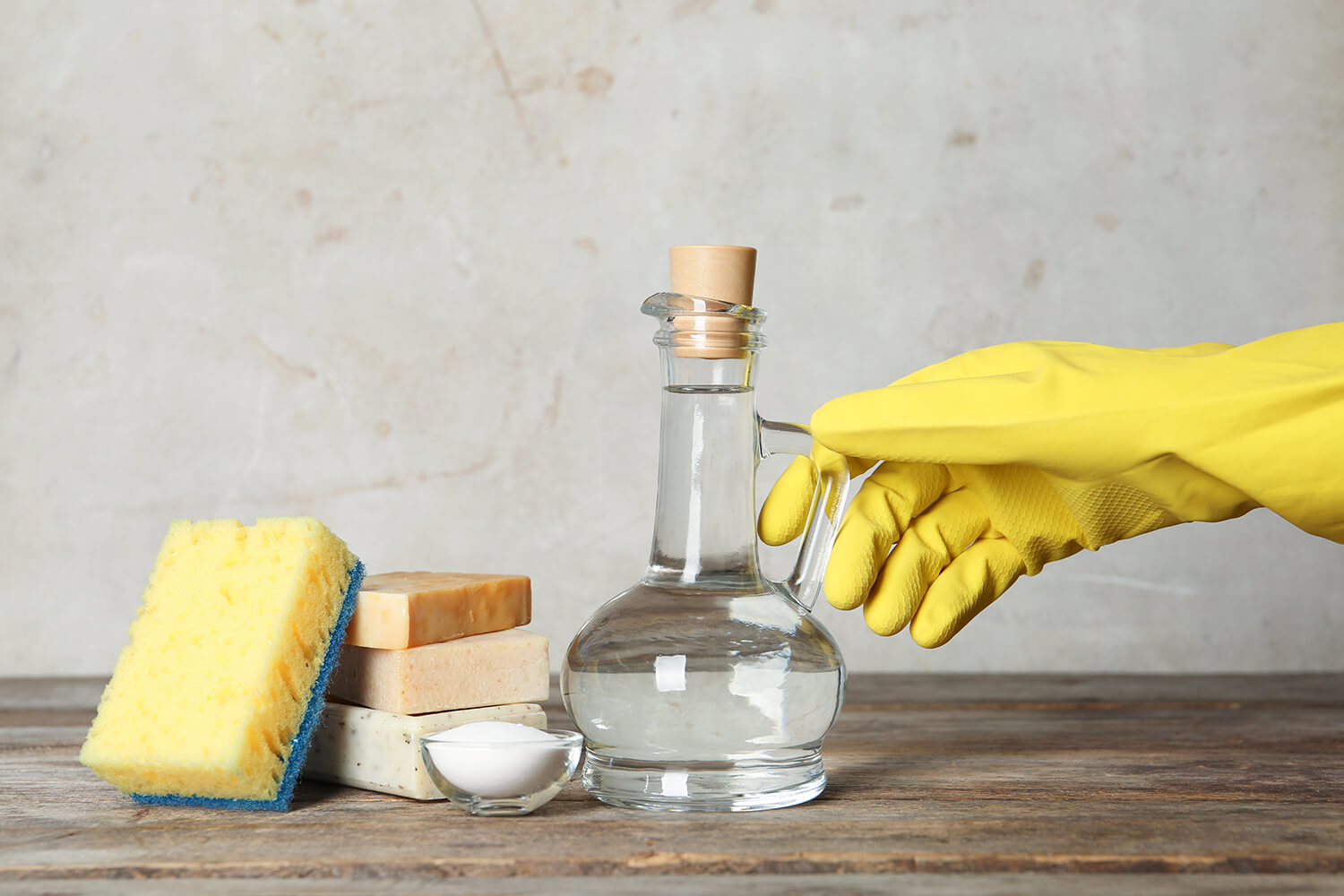
Drain unclogger and drain freshener
Ingredients:
- 1 cup baking soda
- ½ cup warm white vinegar
- 1 tbsp salt
If your drain is clogged or is beginning to smell this natural recipe will remove the clog and freshen up. Mix baking soda and salt and pour down the drain. Warm the vinegar, pour down the drain then immediately plug up to keep it all inside the drain. Leave for half an hour then run through hot water for a few minutes. Might need to repeat in some cases.
Window cleaner
Ingredients:
- ¼ cup of white vinegar
- 1 tbsp of cornstarch
- 2 cups of warm water
This mixture will clear your windows and make sure you its streak free.
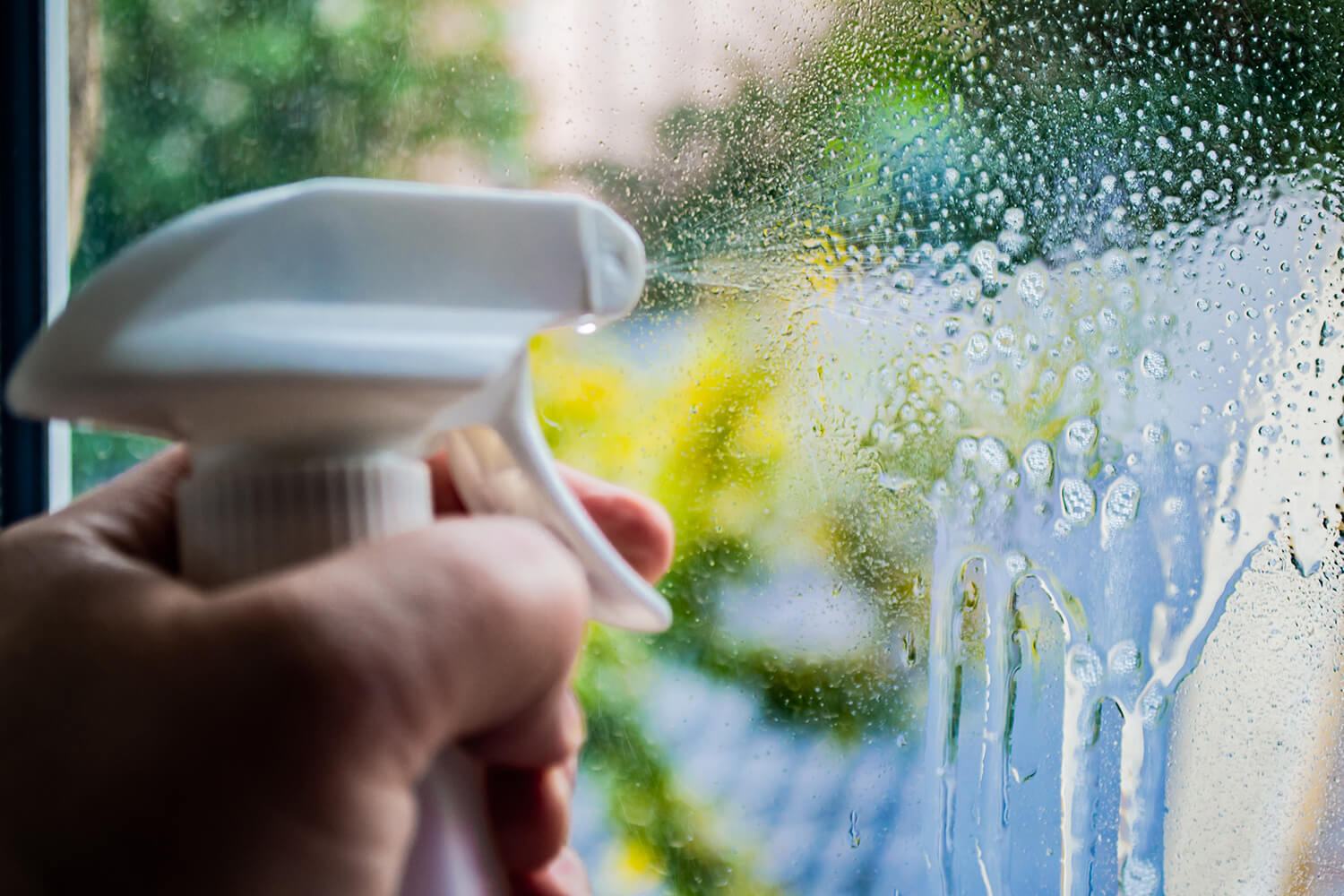
Bathroom cleaner
Ingredients:
- 2 cups of water
- 3 tbsp white vinegar
- 20 drops of tea tree oil
Get your toilet smelling clean with this solution as you mix it up and use a sponge or cloth to keep it spick and span during your weekly clean.
Green Living at Home
Making small changes around the house can really add up to make a difference as a whole. Opting for homemade natural cleaning products not only have positive impacts for your family and home in the long run, but also for the earth. You can also make a conscious effort by opting to save electricity and and learn how to cool your home naturally as well. We promise that it will help you fight the heat.
References:
- Elangovan, N. (2020, June 5) Singapore households generated additional 1,334 tonnes of plastic waste during circuit breaker: Study, Today Online.
https://www.todayonline.com/singapore/singapore-households-generated-additional-1334-tonnes-plastic-waste-during-circuit-breaker
Image Credits: Nylon Coffee Roasters
Source: The Sustainability Project
Plastic Pollution in Singapore - What Is It And Why Does It Matter
- Home
- Articles Posted by (
- Page 9 )
[Post Date]
Plastic Pollution in Singapore – What Is It And Why Does It Matter
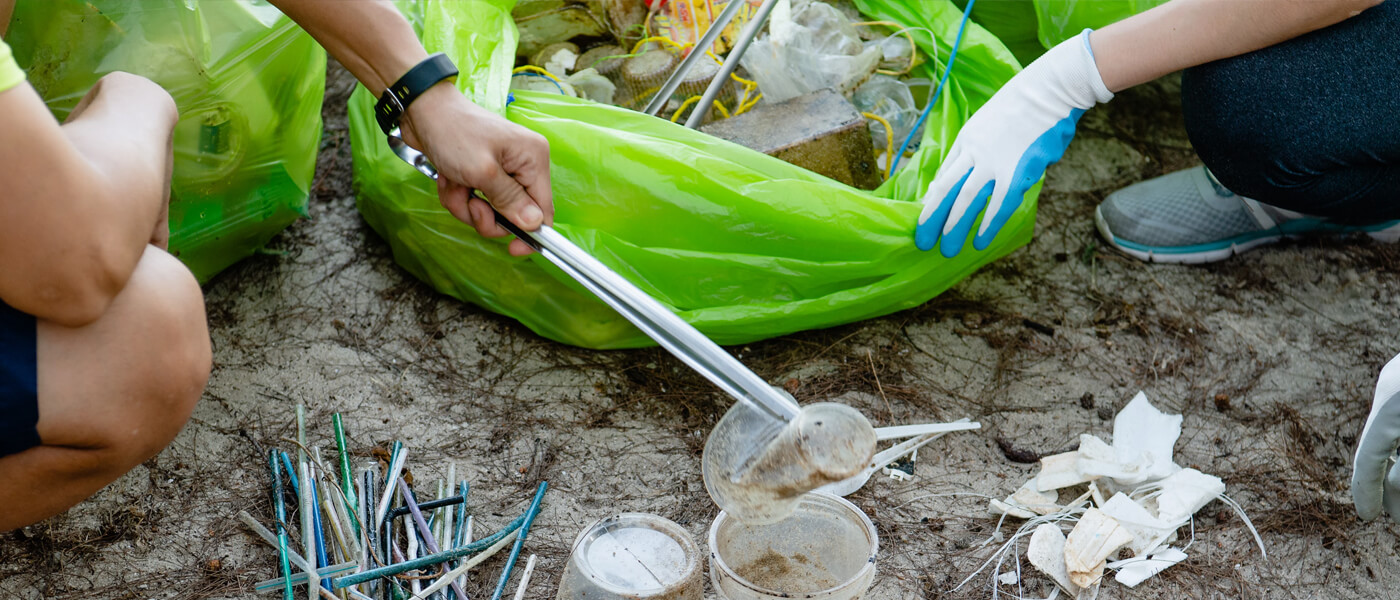
Last week, Singapore’s National Environment Agency (NEA) shared some alarming data on plastic waste in Singapore. Out of 949,300 tonnes of plastic waste generated in 2018 (any comparison we can give? For example weight of like 5000 buses or something), 96% of these were incinerated and dumped at Pulau Semakau. The more worrying trend is that this number is 2% less than 2017, and less than half that of five years ago.
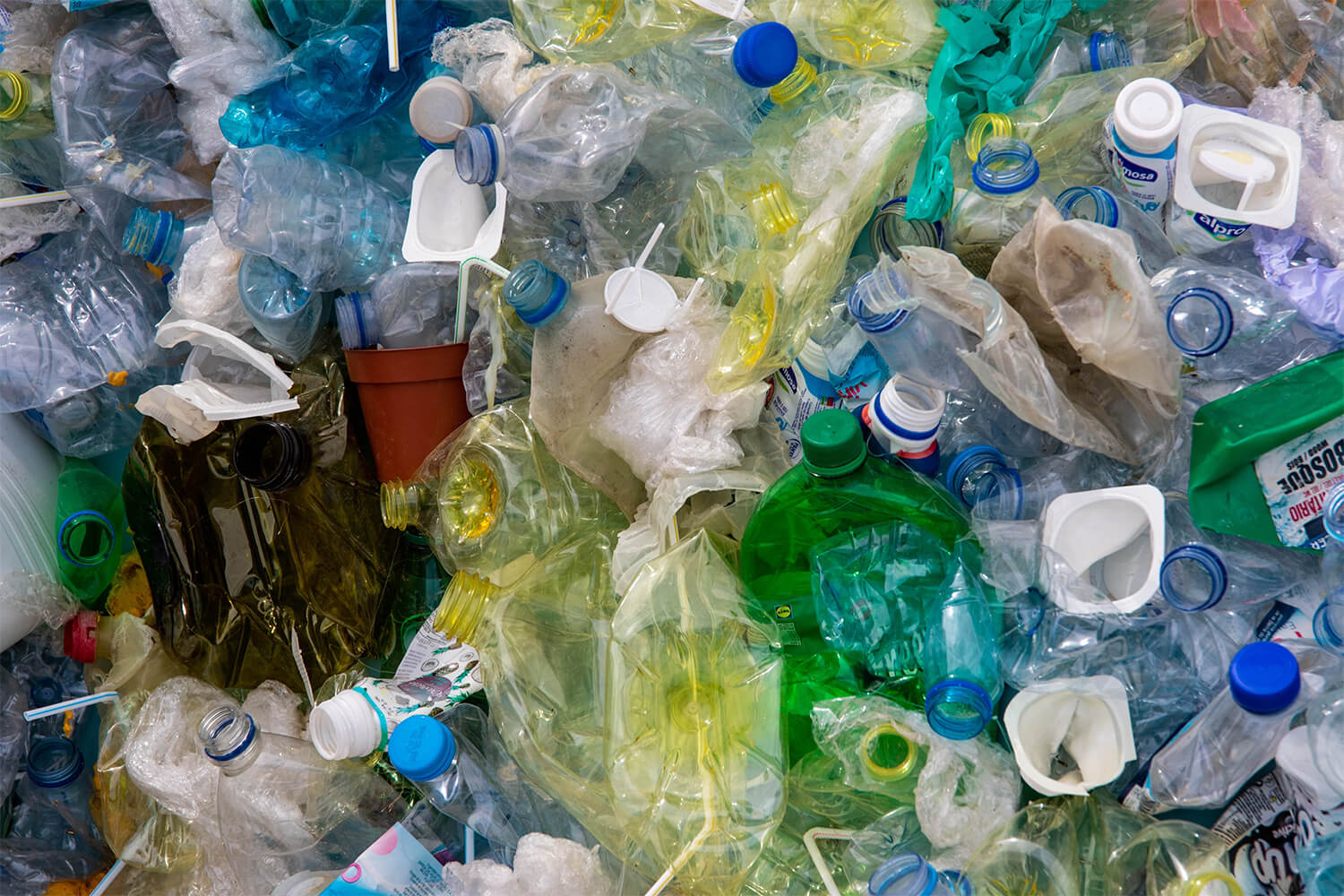
How much plastic waste have you generated so far today?
Plastics are among the most common forms of waste not just in Singapore, but around the world. Every day, we see plastic being used across almost all aspects of our lives. From food wrappers to straws and plastic bags, it is almost impossible for us to completely avoid any plastic usage. While some of these plastic items can be reused, most of it ends up being thrown away, resulting in plastic waste that is usually non-biodegradable and can’t be recycled.
Why Does It Matter?
In Singapore, non-recyclable materials are incinerated, before being dumped at Pulau Semakau, an offshore island. With an increasing rate of plastic usage in Singapore, Pulau Semakau is now quickly filling up. At our event with Repair Kopitiam last month to launch their third site, Dr. Amy Khor, Senior Minister of State for the Environment and Water Resources, shared that Singapore generated 8 million tonnes of waste just last year alone, equivalent to 530,000 double decker buses. At this rate, we will be filling Semakau landfill by 2035, and it will be difficult to find an alternative solution when that happens.
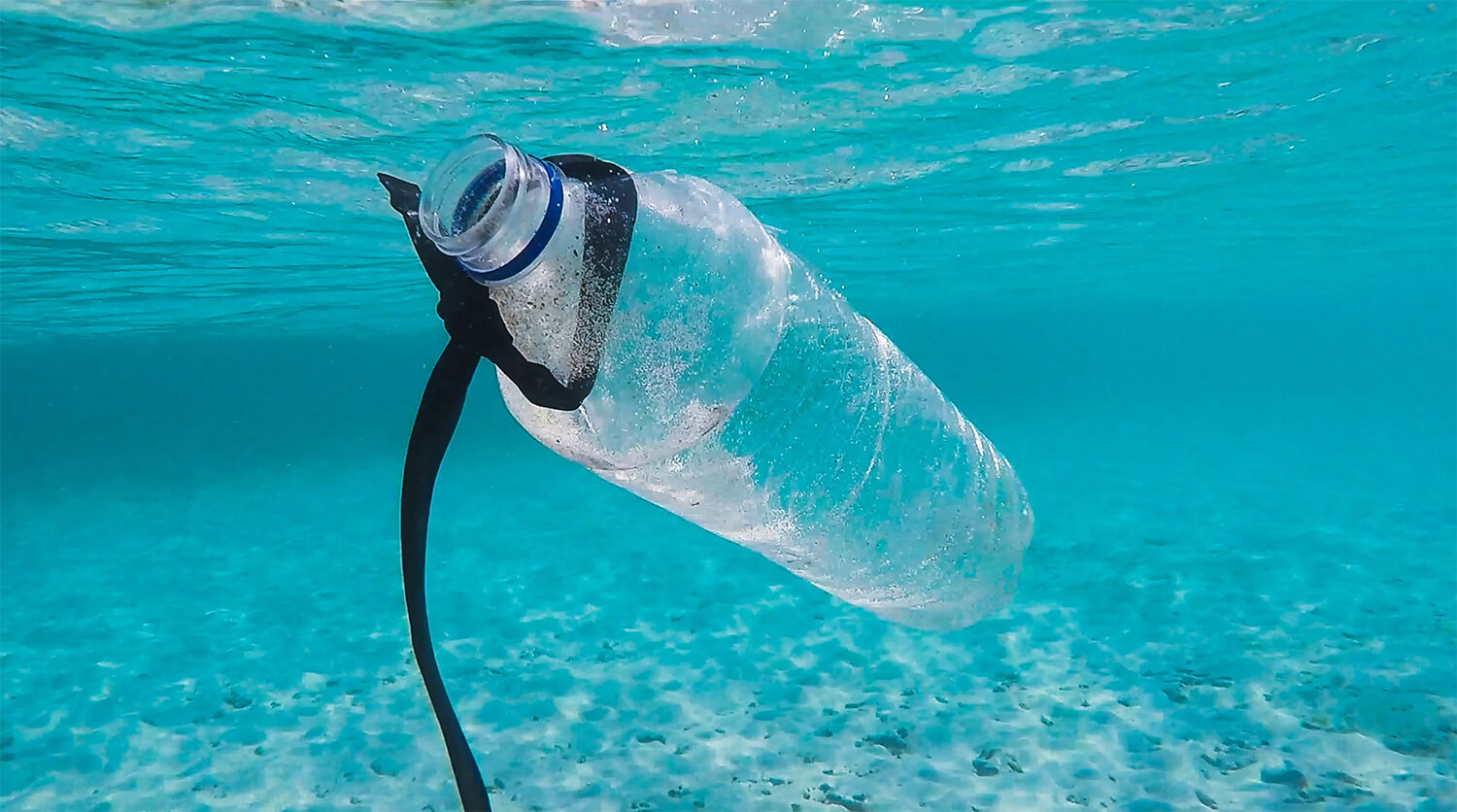
Besides the immediate land pollution implications, burning plastic waste is also a huge contributor to air pollution. Without the right measures, the incineration of plastic waste can result in harmful toxic gases being released into the air.
And this is only the case if the plastics are properly disposed.
While most of us may be considerate enough to dispose of our plastic waste properly, it is inevitable that some of these plastic waste end up in our surrounding waters. This is extremely harmful for our beautiful marine life who may accidentally swallow the plastic or be caught in them, and this problem has since come back to haunt us.
In fact, statistics from the World Wildlife Foundation (WWF) Singapore have revealed that one-quarter of the fish that we consume have plastics in their guts, and 83% of tap water samples contain plastic in them. These are worrying numbers, as they show that plastic pollution is not only harming the environment around us, but also threatening our lives and our future generations.
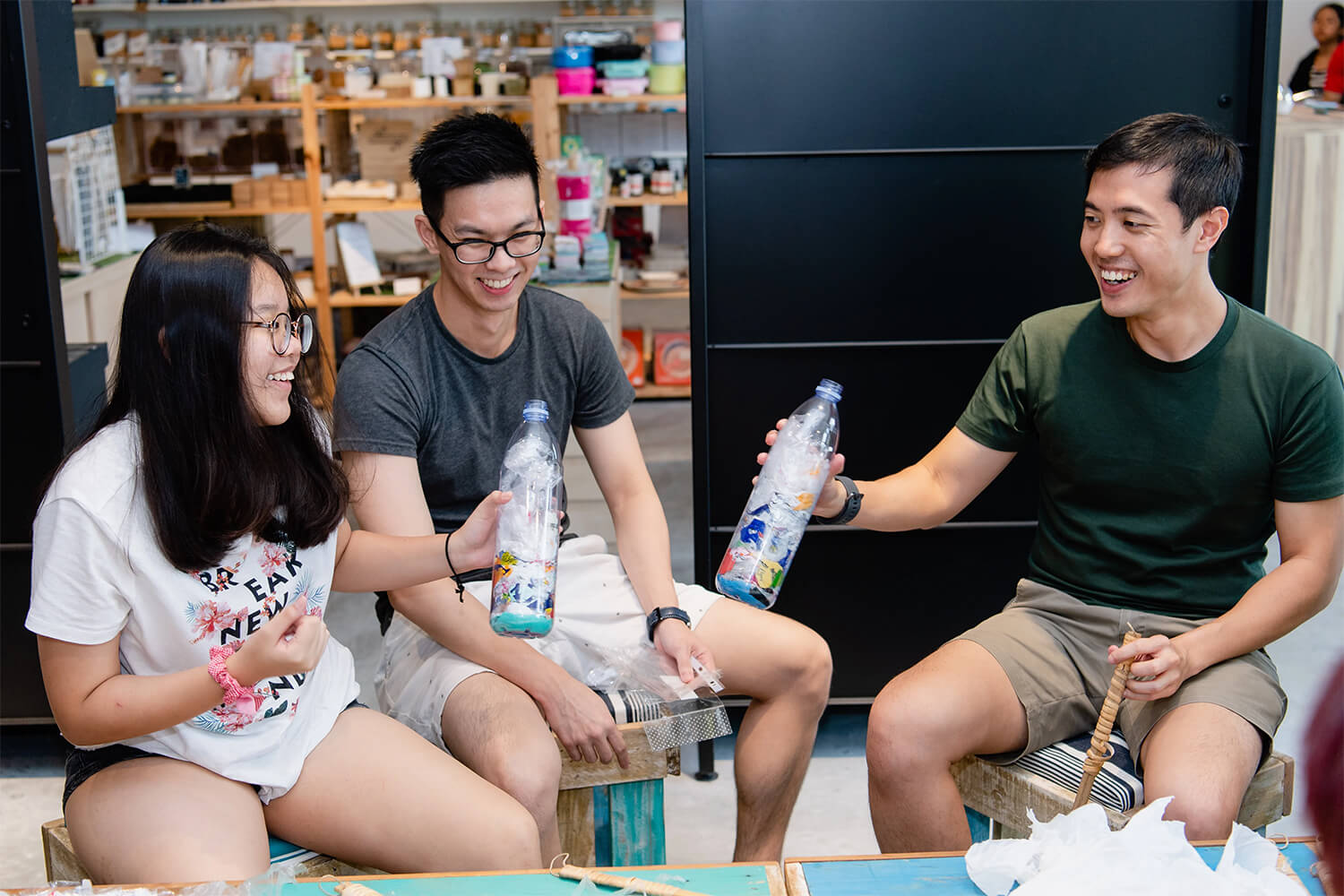
What Can I Do?
To help combat the threat of plastic pollution, you can play your part by reducing your daily plastic footprint. It may be cliche, but everyone has their part to play, and influencing those around you with your actions will go a long way in shaping a better tomorrow for ourselves.
To get started, here are some simple ways you can cut down on your plastic usage:
1) BYOB (Bring Your Own Bag)
When shopping for groceries or other products, bring your own shopping bags to avoid having to use plastic bags at shops. A nice tote bag can actually be more durable than the average plastic bag, and even provide an aesthetic boost! If you do end up using a plastic bag for your shopping, be sure to keep it for future usage instead of throwing it away.
2) Reusable Utensils and Kitchenware
Instead of using disposable utensils and plastic containers, bring your own reusable ones. Metal containers can be a good companion for your takeaway food, and you can even keep it warm! With a small additional hassle of washing your container and utensils, you can do a big part in cutting down plastic usage. The same applies for plastic straws, and metal straws are becoming increasingly popular among Singaporeans as more F&B outlets are beginning to stop providing straws for customers.
3) Choose Your Packaging
With an abundance of products available in our supermarkets, you can help to promote good habits by making the right choice while buying your everyday goods. Avoid products that make use of too much plastic packaging, and support those that use alternative materials. By making this slight change to your purchasing patterns, you can send a message to the manufacturers that reducing plastic usage in their products can be beneficial to their business.
4) Reuse Your Plastics
Plastic bags can be reused to contain other items. Refrain from throwing them away immediately after just one use. Certain plastic bottles and containers can also be reused to contain other household items. Our latest changemaker, Green Nudge Singapore, goes the extra mile by repurposing plastic waste into “eco-bricks” – plastic bottles with smaller pieces of plastic stuffed in them – that can then be made into improvised furniture such as stools and tables.
#PlasticFreeGeneco
At Geneco, we strive to be more than just a power retailer, but a partner to our users in the larger ecosystem. We want to bring positive energy to our community, and contribute to powering the change in people to adopt better habits. Visit our Changemakers website to find out more about what organisations like Green Nudge are doing to help Singapore become a greener and better place to live in.
By doing our part against plastic pollution, we are taking charge of our own future and helping to improve our ecosystem, keeping it beautiful, clean and green for the years to come. Making small changes to your daily lifestyle to reduce your plastic usage can go a long way in changing the world around you. Start today!
Besides your plastic footprint, think about reducing your carbon footprint as well. You can begin by signing up for Geneco’s carbon-friendly “Get It Green” and “Get Sunny” plans.
References:
- Elangovan, N. (2020, June 5) Singapore households generated additional 1,334 tonnes of plastic waste during circuit breaker: Study, Today Online.
https://www.todayonline.com/singapore/singapore-households-generated-additional-1334-tonnes-plastic-waste-during-circuit-breaker
Image Credits: Nylon Coffee Roasters
Source: The Sustainability Project
Top Tips On Reducing The Electronic Waste Pollution In Singapore
- Home
- Articles Posted by (
- Page 9 )
[Post Date]
Top Tips On Reducing The Electronic Waste Pollution In Singapore
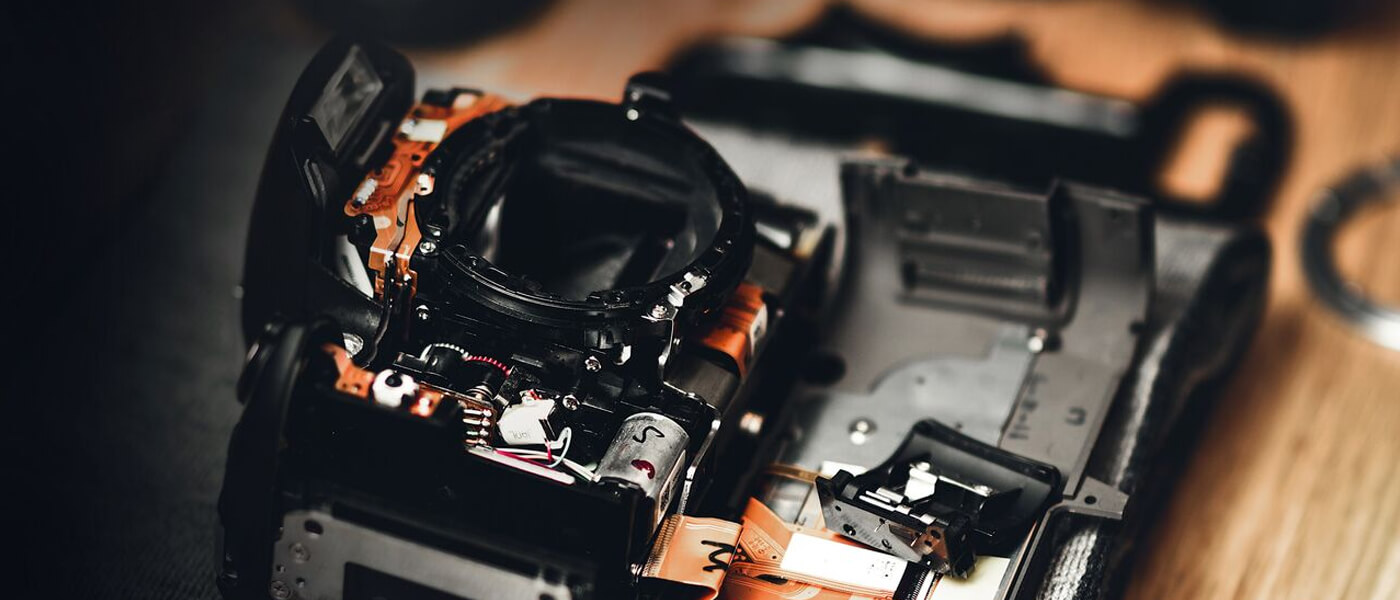
Over the past months, we have held conversations on combating food waste, being savvy with our resources and paying attention to marine trash. Becoming mindful of the impact of our consumption and lifestyle is the first step in dealing with the environmental problem facing our future.
This time, we look at an oft-neglected, insidious and ominous waste – electronic waste.
What Is Electronic Waste?
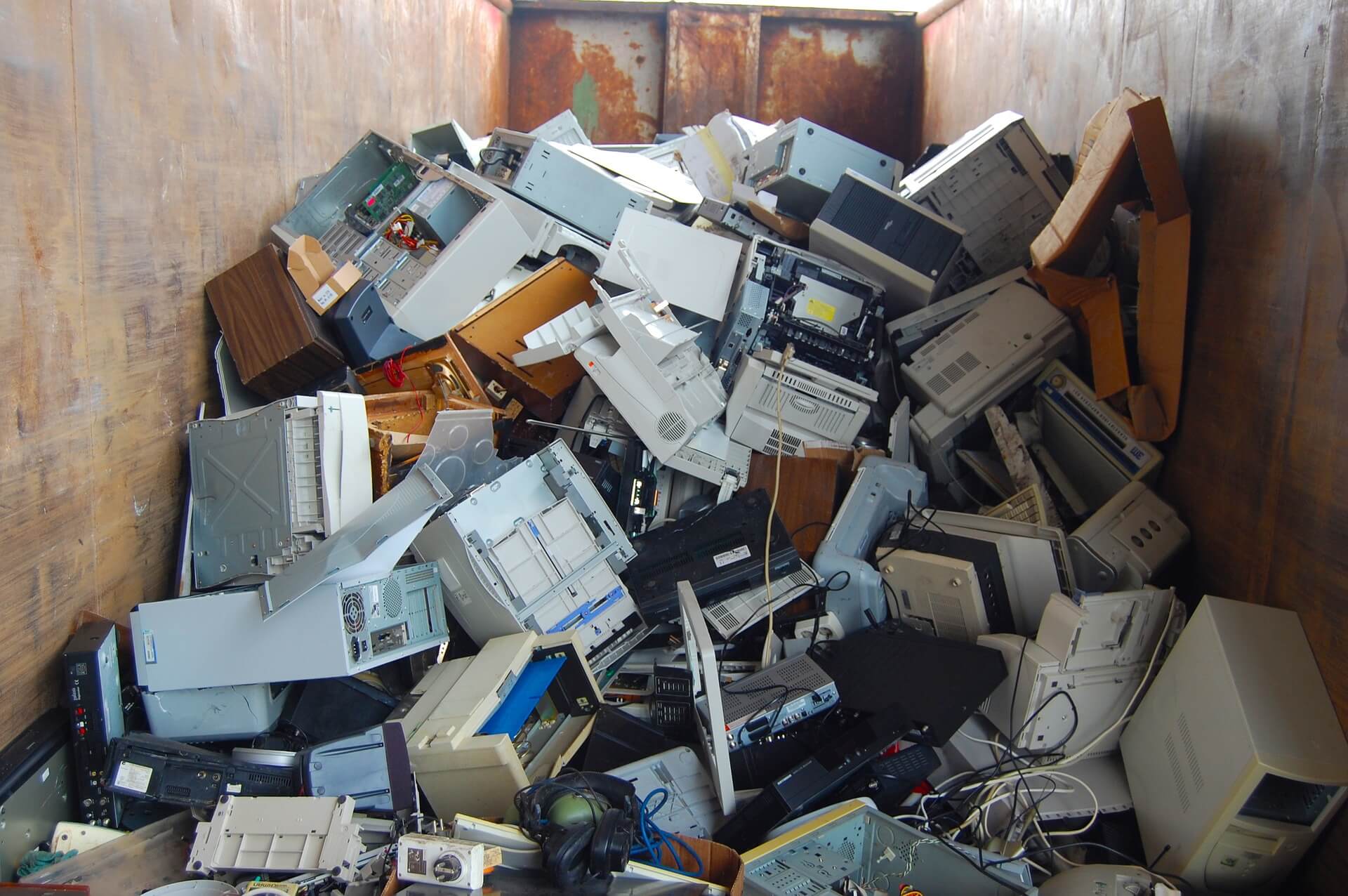
Electronic waste, or simply e-waste, refers to electrical or electronic devices that have been discarded. Electronics that are destined for repurposing, either to be reused, resold, refurbished, recycled or simply disposed are regarded as e-waste.
Contrary to popular belief, the processing of e-waste is not always something green warriors can be proud of. The process can release many harmful materials and substances into the environment.
How Harmful Is E-waste?
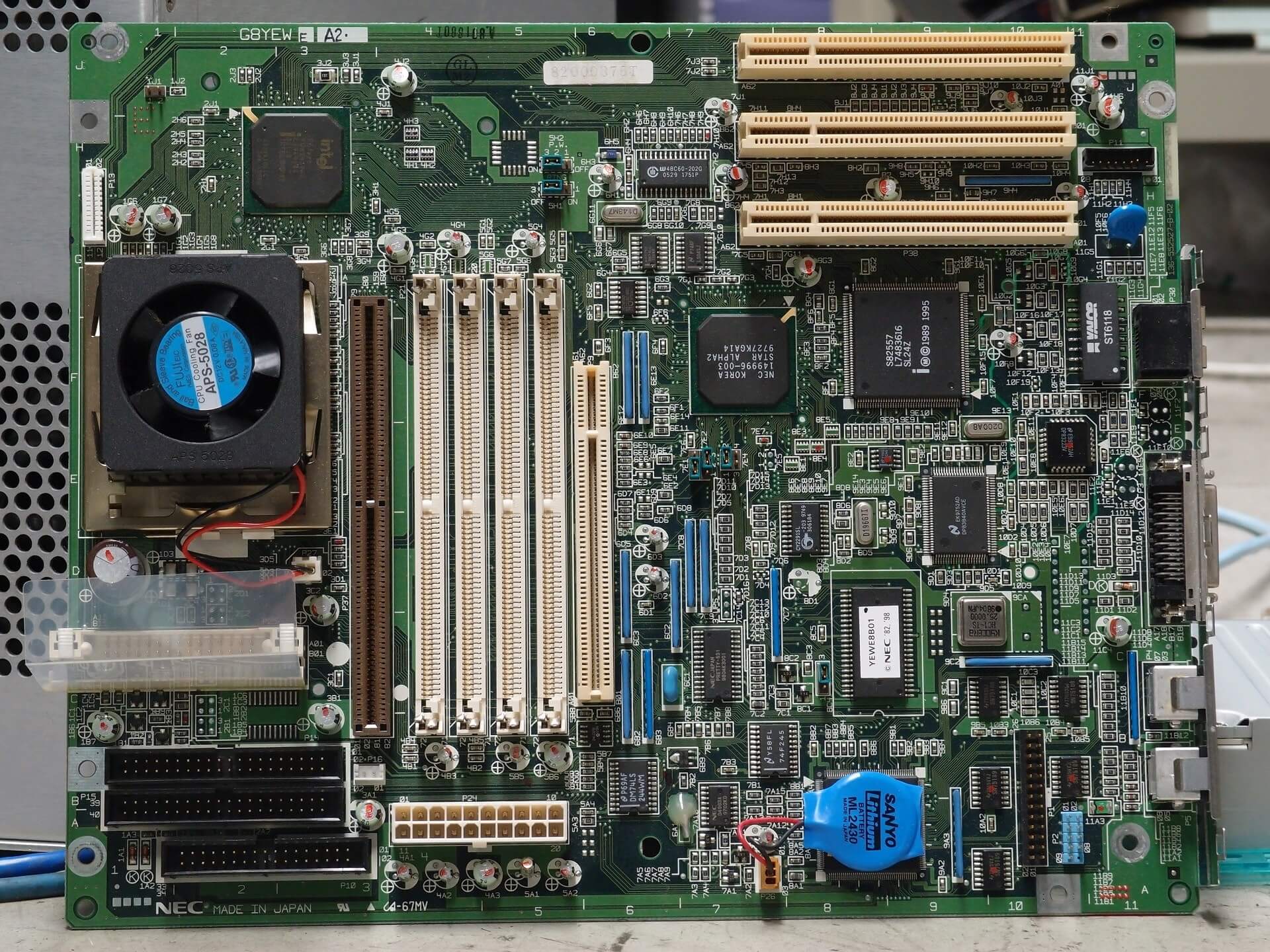
There is a reason why parents freak out when children discover “oily” batteries. This “oil”, which is either a corrosive and contaminating alkaline (in alkaline batteries) or acid (in lead batteries), is just one example how e-waste can harm our health and the environment.
Many electronics are made with materials that are far from friendly for health and environment. Such materials include:
- Lead
Used to make wires and solders. Lead exposure can damage the brain and nervous system, leading to coma, fits and death. - Cadmium
For electronics coating and rechargeable batteries. Very toxic and exposure can cause cancer and impair heart, kidney, gastrointestinal, brain, reproductive, and respiratory functions. - Beryllium
Used in making phone parts and portable devices. Damages the lungs when breathed in and causes berylliosis. - Brominated flame retardants
Can cause cancer and may affect brain and mental functions. - Polychlorinated biphenyls
Used in electronics fluids, capacitors and transformers. Highly toxic and carcinogenic.
Such compounds, among many others like mercury and lithium, when released into the environment, can pollute air, water, ground and wildlife. Such pollution ends up back in the food supply chain and accumulate over time.
How You Can Reduce E-waste
Sell away or donate unwanted/obsolete electronics
One man’s trash is another’s treasure. Selling or giving away gadgets helps to prolong its usefulness and keep it off the trashcan or landfills.
Finding buyers for such items is not difficult with Facebook’s Marketplace, Carousell, Craigslist and even Gumtree. If your item in question is a cell phone, you can always try to get a good deal with mobile phone shops.
Whatever it is, keeping electronics in good condition is always a good way to maximise sale value!
Dispose of/Recycle E-Waste the Right Way
As explained earlier, e-waste can contain a lot of hazardous materials and, thus, proper disposal is needed. Big electronics brands like Apple, Samsung, and other electronics companies have programs to take back unwanted gadgets. Certain shopping malls have e-waste bins where you can safely discard your electronics.
As compared to producing new parts, recycling old electronics can help save a lot of energy and reduce the demand to mine the raw materials.
Take Good Care of Your Electronics
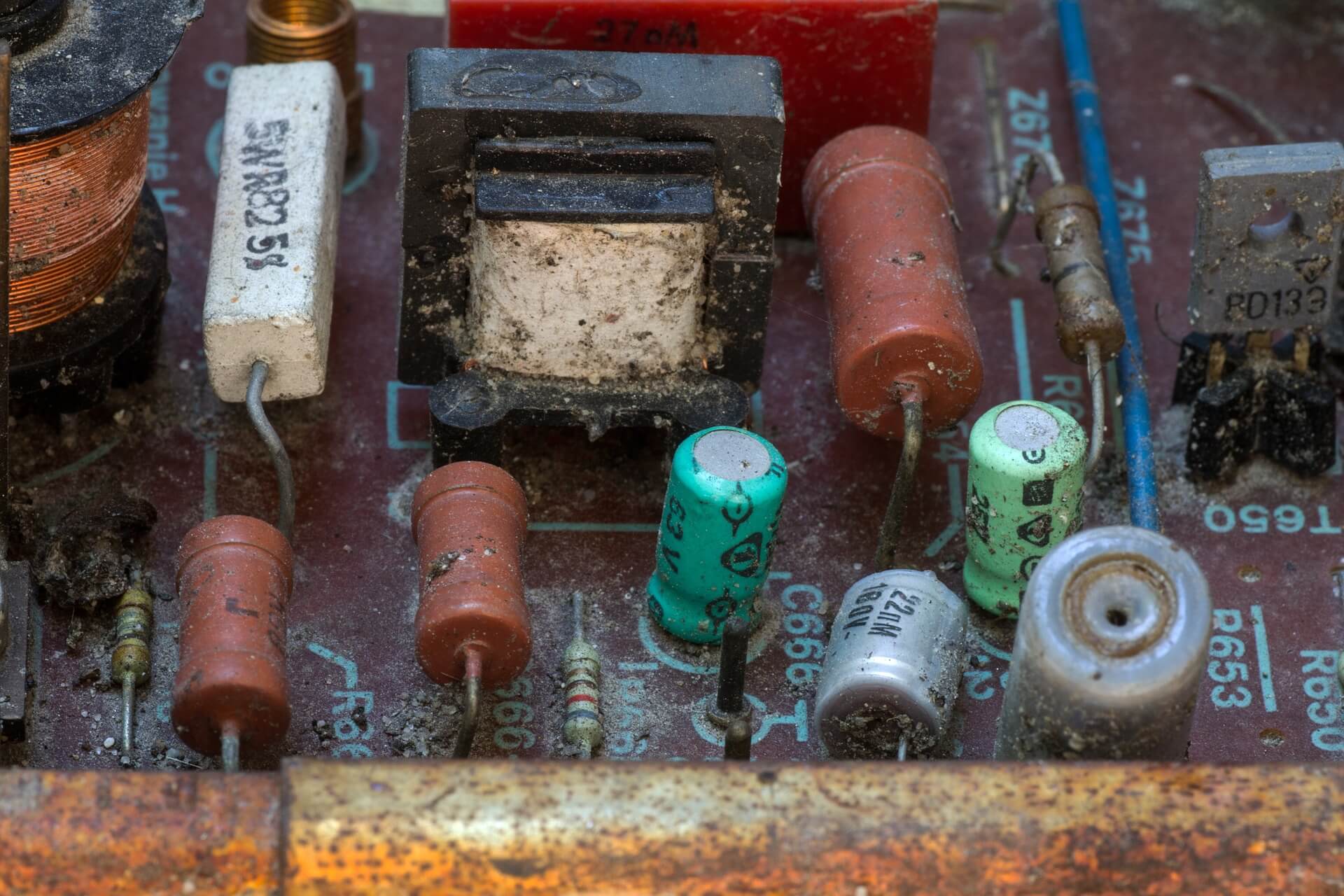
Keeping your electronics in good condition not only allows you to sell it off at a better price later, but meanwhile increases its lifespan. This way, it can help reduce the demand for replacements. Here are some simple tips to taking care of electronics:
- Keep them out of extreme cold and heat
- Clean lint-free/microfibre cloth to prevent lint from filling up crevices or going into the chips.
- Turn off TV’s power before cleaning to avoid having moisture going into the components and shorting it. TVs can get quite hot; vacuum the air vents often to ensure dust do not trap heat or prevent the fans from working well.
- Make sure electronics that heat up during use, such as the TV, computers and microwave ovens, are well-ventilated.
- Make sure to declutter your computer’s drives so that it can run smoothly and quickly.
- When going away for a few days, keep laptop and mobile phone batteries at 80% – not empty nor 100% full – to maintain batteries’ lifespan.
Learn to Repair Electronics
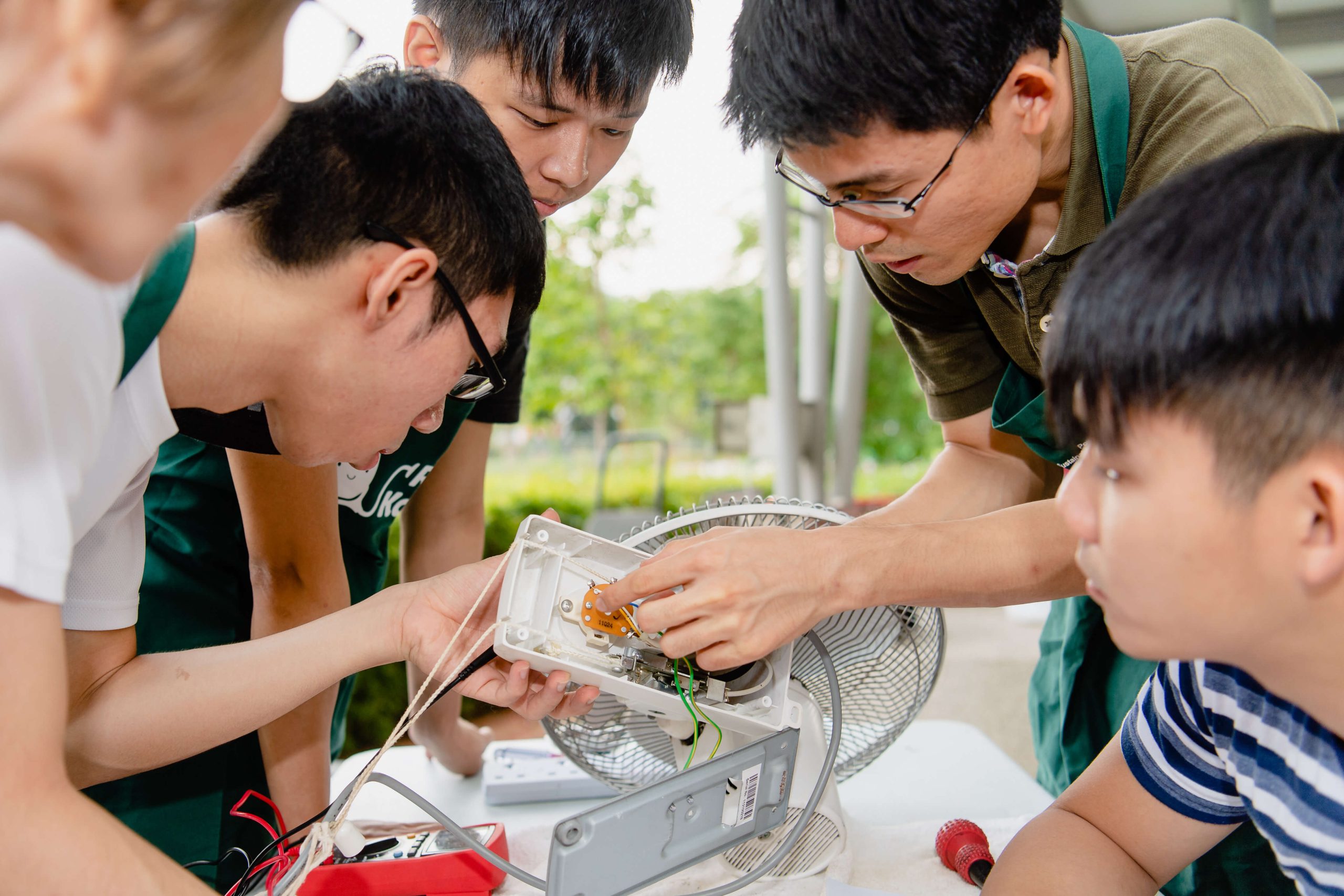
Stand against the buy-and-throw-away culture and cultivate a second-chance attitude when it comes to dealing with faulty electronics. Many electronics, like fans, irons, phones etc. can work just as well if you know where the faults are and repair them. This can ensure less waste is generated and save you money too.
There are many videos available on YouTube that will show you how to conduct simple repairs and help you understand how to replace parts.
Our #ChangeMakerSG partner, Repair Kopitiam, is a great place to learn how to repair your electronics and discover neat tricks to maintaining them. At Repair Kopitiam, you will find ‘Repair Coaches’ helping Singaporeans fix all kinds of faulty products, from electrical appliances to everyday household items. We at Geneco maintains a strong partnership with Repair Kopitiam so that we can reduce e-waste by encouraging people to try repairing faulty products first before deciding to discard it.
We are also excited to announce that we are strengthening our partnership by powering Repair Kopitiam’s expansion into Ang Mo Kio on 29 September 2019!
COMBATING E-WASTES WITH THE 4 RS
Preventing electronic waste from ending up in the incinerators, landfills and waterways can be achieved by everyone.
Reduce unnecessary demand for new electronics wherever possible, such as new smartphones or computers. Reuse/Repurpose properly working electronics such as by making your old phone your new music player. Recycle electronics so that we can collectively relieve the demand for raw materials. Finally, repair broken electronics and give them a new of life.
A little bit of patience, creativity and tenacity can go a long way to protecting our environment!
References:
- Elangovan, N. (2020, June 5) Singapore households generated additional 1,334 tonnes of plastic waste during circuit breaker: Study, Today Online.
https://www.todayonline.com/singapore/singapore-households-generated-additional-1334-tonnes-plastic-waste-during-circuit-breaker
Image Credits: Nylon Coffee Roasters
Source: The Sustainability Project
The Oceans Are Drowning In Trash And How You Can Save Them
- Home
- Articles Posted by (
- Page 9 )
[Post Date]
The Oceans Are Drowning In Trash And How You Can Save Them
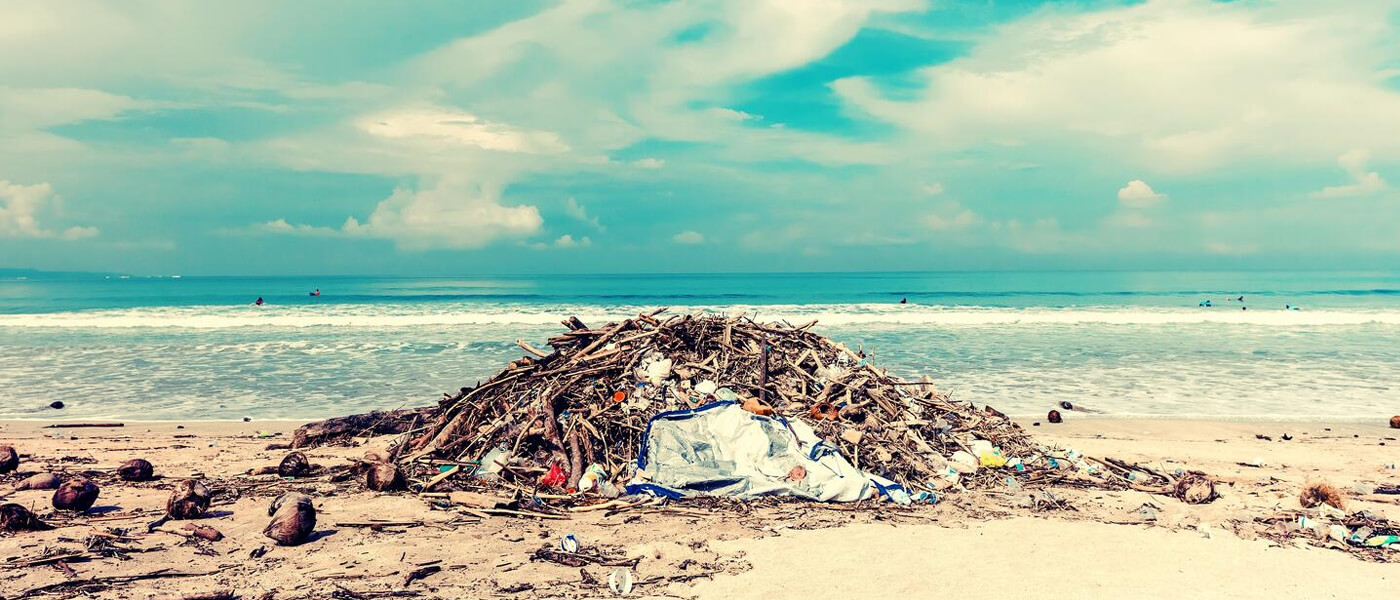
When we bring up the topic of marine waste, you probably think about far-flung marine waste destinations like the Pacific trash islands, Dominican Republic’s and Hawaii’s not-so-pristine beaches.
However, to think that Southeast Asia is not contributing to and facing large-scale marine waste problems is utter rubbish. In fact, SEA nations Indonesia, the Philippines, Vietnam and Thailand, along with China, were named the worst litterbugs by a 2017 Ocean Conservancy report.
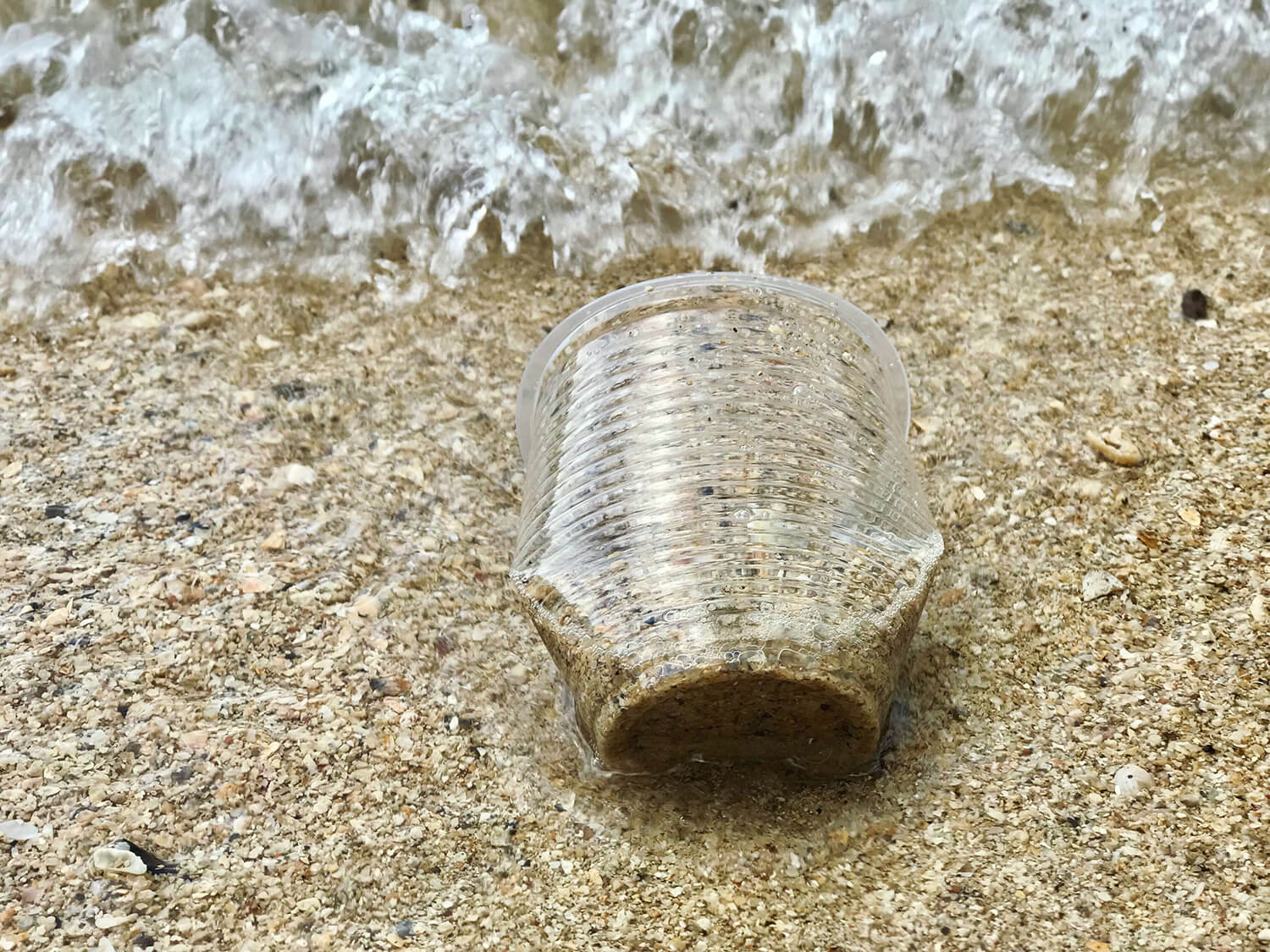
What Is Marine Waste?
Marine waste refers to man-made trash that have been either accidentally or purposefully released into the water bodies like lakes, rivers, seas and oceans. Because of tidal motions, marine waste can accumulate and end up on beaches, disrupting wildlife, or get snagged by reefs and choke corals as a result.
With plastic being a prevalent material in man-made products, the impact of marine waste is significant. Most plastics, being non-biodegradable, can plague the oceans for thousands of years to come. They can destroy coral reefs, hurt marine life when accidentally ingested and even end up along the food chain.
NGOs and scientists have continuously sounded the alarm and activists flailing their arms in the air. As such, governments around the world awoke from slumber and are gradually enacting laws to address the issue.
However, even the late Lonesome George would find the speed of marine protection too slow.
What Can You Do to Combat Marine Waste?
The global waste problem may be colossal, and each individual seem too small to make a dent. However, by taking some simple and personal steps, we can pitch in to help.
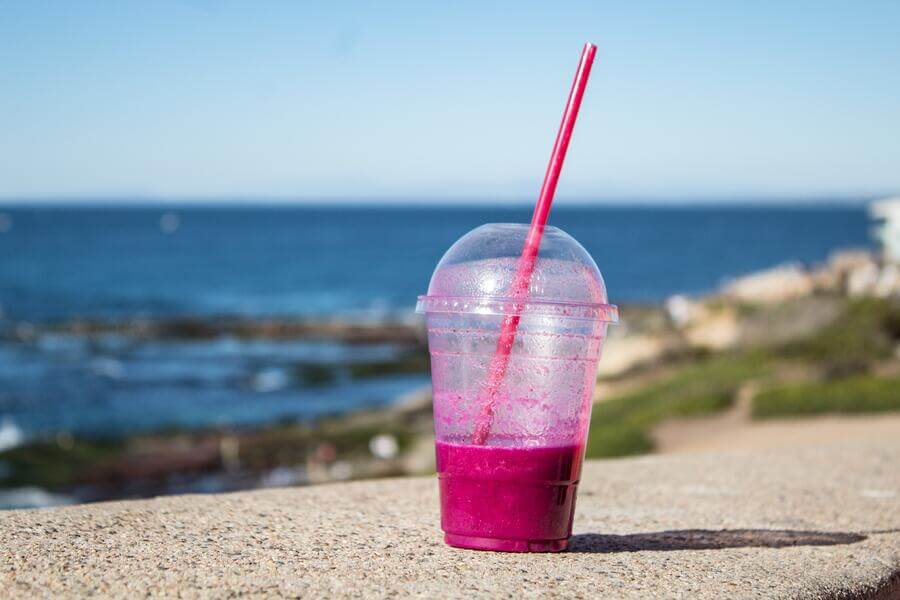
Reducing our dependency on single-use plastics
It’s hard to tell if plastic exist around us or we exist around plastics. From straw to carriers to car parts and cutlery, extra-terrestrials observing us from space would think plastics make up our natural habitat. Make a commitment to rely less on single-use plastics and adopt more permanent lifestyle choices like using metal or wooden alternatives where possible.
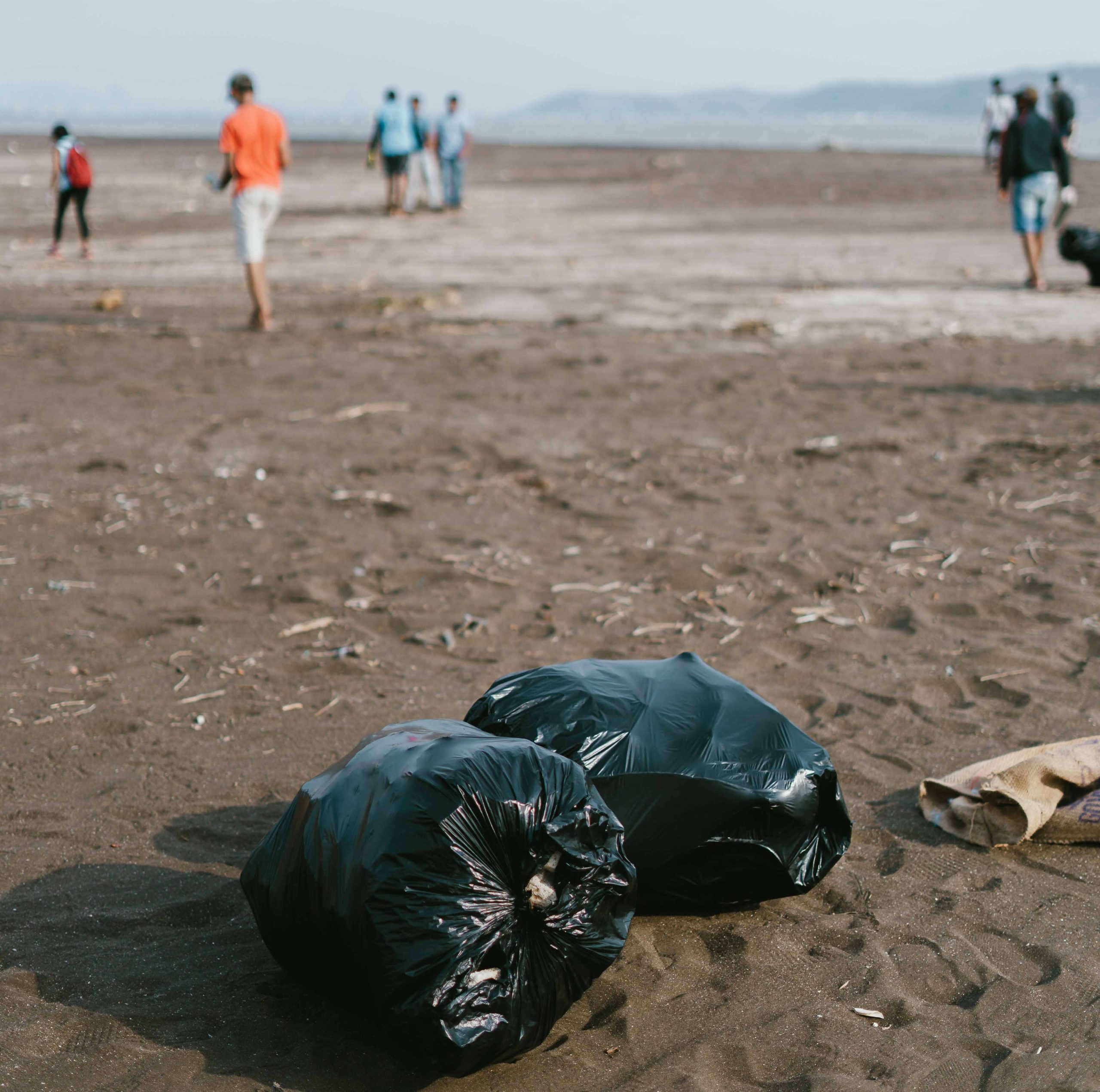
Bag your trash
Have you seen how plastic bags get swept up by even a gentle breeze and metal cans float in the sea? Small items are easily misplaced. To make rubbish less likely to end up in places they are not supposed to, simply collect them and make it collectively larger where wind, water and any other forces are less able to pick them up.
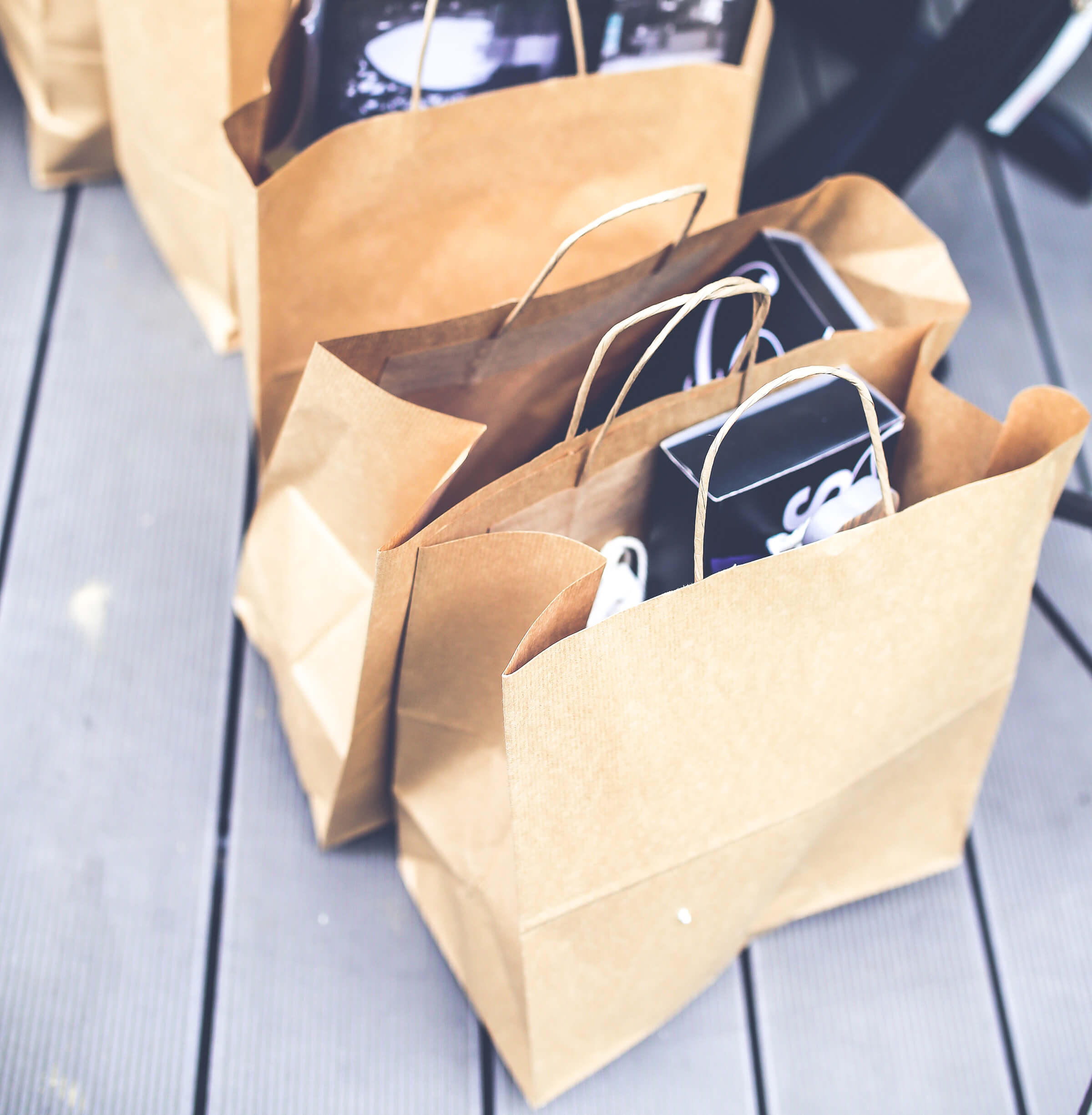
Consume less
The intelligence of humans is our greatest asset but can also be a crippling shortcoming. With sophistication as our middle name, we tend to approach simple problems with complicated solutions. To reduce waste ending up in the ocean, we can just ensure less material gets out there. Simply put, use less materials.
We do not need straws (most times), plastic cup lids when dining, a carrier for a single piece of ham roll from BreadTalk. Heck, with e-angbaos, we don’t even need real angbaos at weddings and Chinese New Year.
By using less, we reduce demand for things that could potentially end up in landfills and waterways. Like mom used to say, if we don’t want to keep our toys, don’t play with them in the first place.
SHARED RESPONSIBILITY – GENECO GOES ECO
At Geneco, we are not just another power retailer. We believe in being a part of the bigger picture, taking up social causes, responding to global challenges and being proactive in bettering lives. From investing in carbon credits to solar energy to anti-waste, we are the planet’s green, mean, fighting machines.
To do our part to reduce the impact of waste, we have been side by side with Repair Kopitiam, pushing back against a buy-and-throw-away culture. We believe one way to reduce waste is to create less of it by making things work again! Although we repair only electronic appliances, we hope to inspire people to give things a second chance.
Fighting marine waste is not just about environmental protection; it is also about every individual being mature and responsible in our stewardship of the resources granted to us. Recognising we have a problem and building up the will to solve needs is the true mark of maturity, integrity and respect for life.
References:
- Elangovan, N. (2020, June 5) Singapore households generated additional 1,334 tonnes of plastic waste during circuit breaker: Study, Today Online.
https://www.todayonline.com/singapore/singapore-households-generated-additional-1334-tonnes-plastic-waste-during-circuit-breaker
Image Credits: Nylon Coffee Roasters
Source: The Sustainability Project
Your Guide To Moving Into A New Home
- Home
- Articles Posted by (
- Page 9 )
[Post Date]
Your Guide To Moving Into A New Home

Congratulations on getting your new home! Being able to own a home is a dream (an expensive one) and a rite of passage for many Singaporeans; you don’t want to be haphazard about moving in and make bad decisions that you will have to live with for years to come.
Beyond providing great electricity deals, we also provide top tips for you to consider as you build your new nest!
Become a budget-hunter

Buying furniture to make your home comfortable and beautiful does not have to be an expensive affair if you know where to find good deals, coupled with some creativity, resourcefulness and adaptability. Perhaps even throw in a little bit of patience for good measure.
Plan your purchases. Some items like utensils, crockery and cloths can be bought in bulk at bundle deals, saving you some cash. To up your game, you can also form coalitions with your neighbours (especially when you are moving into a new estate) and bulk-buy everyone’s shopping list. Nowadays, joining groups on social media to meet new residents can bring about some strategic advantages. Use it to formulate supermarket and IKEA battle plans to attack hot deals for everyone’s benefit.
Remember when we mentioned earlier how a little bit of patience helps? Become a budgetary visionary – hold off purchases and scout for upcoming fairs and tradeshows where not only can you find things at cheaper prices, but you can also enjoy exclusive deals and bonuses!
Clean your apartment first
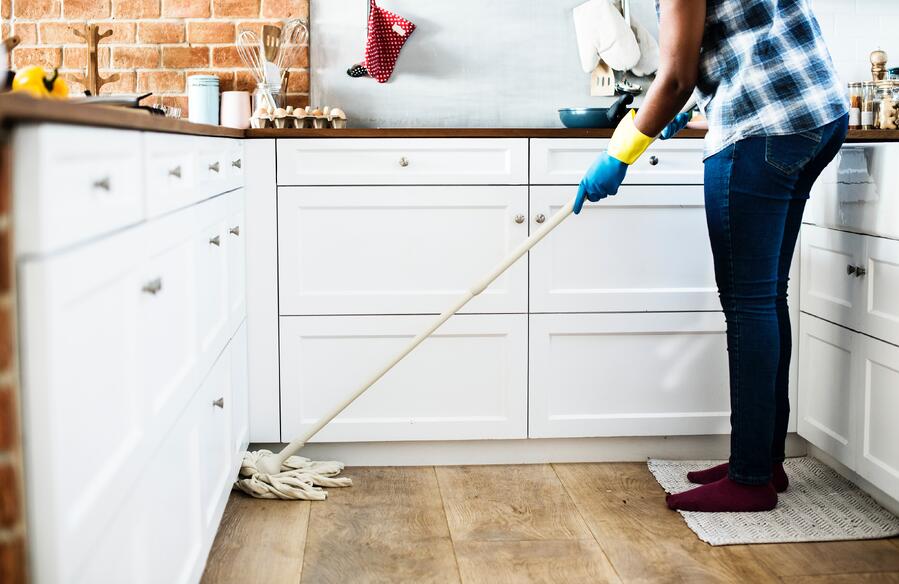
Yes, we know. Every new homeowner cannot wait for the voila moment where all that should be in the house are in their place. However, clean up your apartment when it is still empty and when all the nooks and crannies are still easily accessible. You can choose to arrange for professional cleaning services, part-time household helpers, friends or family to help, or make this a couple activity to build up some teamwork.
Book movers in advance
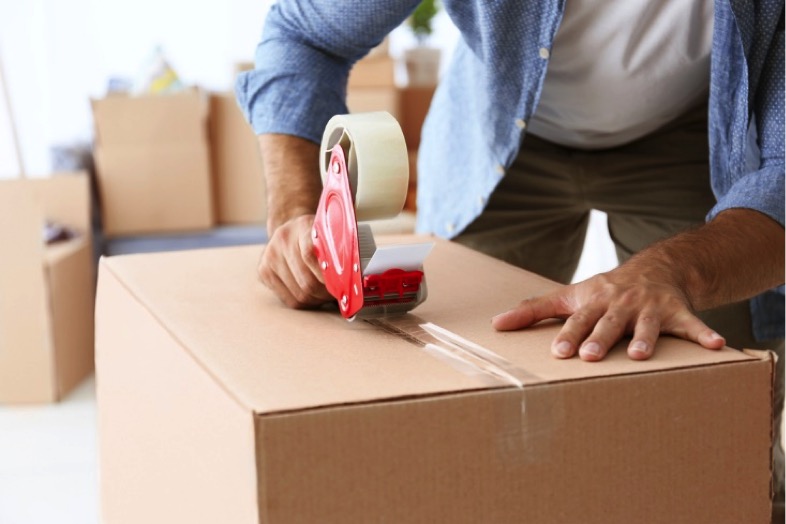
This is where your vacation planning skills can be put to good use. This time, instead of buying tickets early to stretch your holiday dollar, book your movers in advance.
Shifting homes can be a very stressful event, and more so at the hands of rookies. Professional movers are veterans at moving bulky items in the most efficient way possible. With well-coordinated teamwork, manpower, and loading furniture into trucks like a game of Tetris, you can spare you and your partner some mental anguish.
Do remember to book movers early before the entire island rings them up to move goods – this way, you can earn yourself preferential rates.
Set up household utilities and services
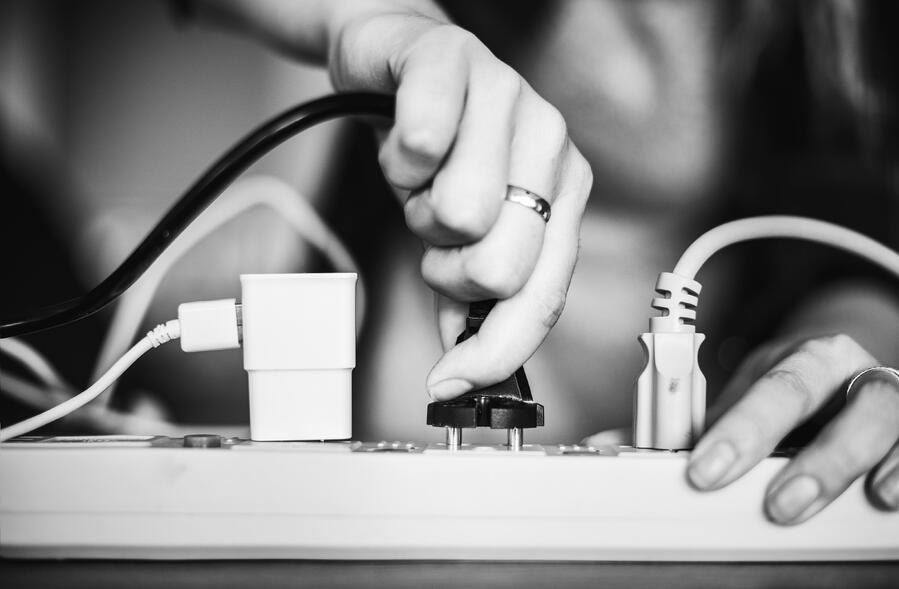
When everything about moving is vying for your attention, do not forget about water, electricity and gas. Set up all your utility services with SP Services ahead of time and get that out of the way.
After hooking up to the grid, you may want to think about how you can save on electricity.
Now that the Open Electricity Market has been rolled out nation-wide, you can shop for electricity plans and take your time to choose from a myriad of plans to suit your needs. At Geneco, we have got plans to suit every kind of usage and personal commitments. Our Get It Fixed 36 is a plan surely to put your mind at ease for the next 3 years. With rates among the lowest of all electricity plans, Get It Fixed 36 allows you to secure a competitive rate for the whole length of the plan regardless of electricity tariff movements.
On top of that, enjoy a one-time $50 rebate on your bill when you sign up for our plans using the promo code POWER50 (limited to the first 5,000 sign ups). Promo ends 31 October, so hurry!
Set up internet data and home entertainment services
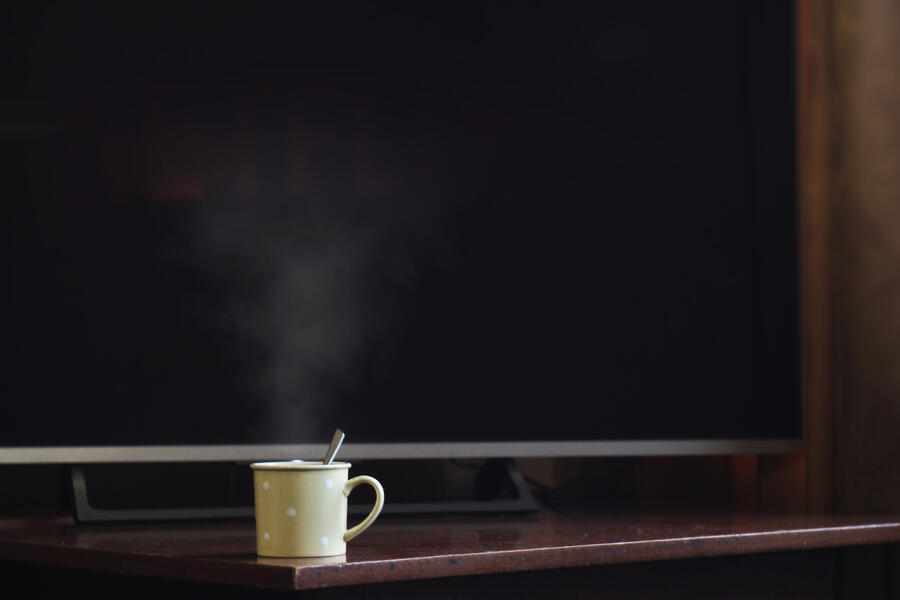
In our new 4G society, having access to the internet can be a huge lifesaver. Internet entertainment like Netflix can save you from being bored to death, food delivery apps like GrabFood can rescue you from starvation and being able to pay bills online quickly spare your pockets a few holes.
As such, you want to get a broadband plan as soon as you can so that you can access the world at large in the comforts of your new home. Beyond electricity services, the local telco scene has now expanded to include a few more competitors; pick and choose your preferred broadband and TV deals to your heart’s desire.
Check your apartment for defects like how you unbox a new phone
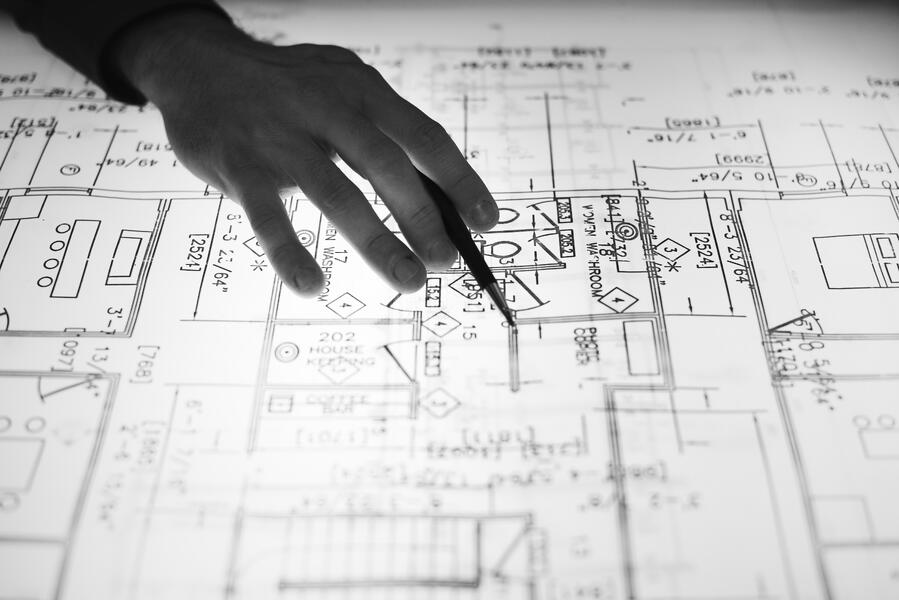
If your new home is a brand new BTO flat or condo apartment, you are entitled to up to one year to report any defects to the HDB or property developer at zero cost to you. So, hold in your excitement and thoroughly inspect every corner for cracks, leaks or other problems.
“Chope” parking spaces
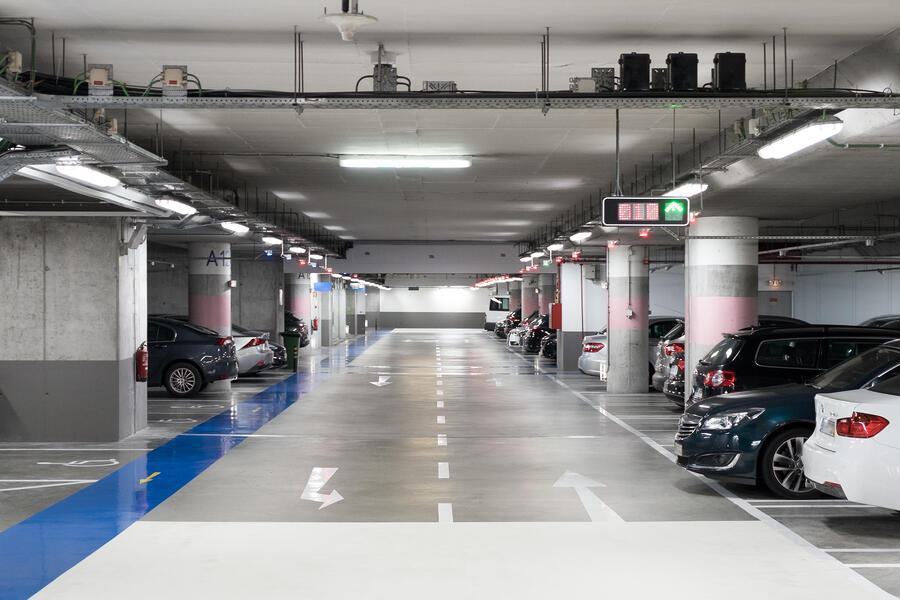
Every Singaporean should know this: any space in Singapore can be subjected to the all-powerful “chope”. If you own a car, you will want to have a permanent space reserved for you to park your car at. For residents of HDB flats, you should waste no time in applying for season parking.
For condo residents, you get to enjoy a little more luxury; parking lots are usually automatically available for up to one car per household with additional lots available for purchase. Check with your property management.
References:
- Elangovan, N. (2020, June 5) Singapore households generated additional 1,334 tonnes of plastic waste during circuit breaker: Study, Today Online.
https://www.todayonline.com/singapore/singapore-households-generated-additional-1334-tonnes-plastic-waste-during-circuit-breaker
Image Credits: Nylon Coffee Roasters
Source: The Sustainability Project
